Experiential learning cycles are everywhere in my work in academic development, so here is a brief overview over how they are used to describe and support teachers developing their teaching.
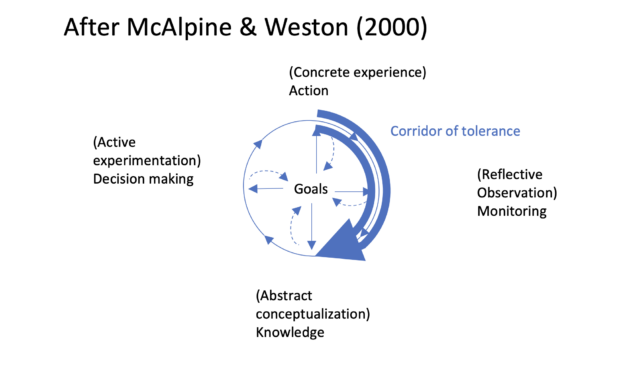

Experiential learning cycles are everywhere in my work in academic development, so here is a brief overview over how they are used to describe and support teachers developing their teaching.
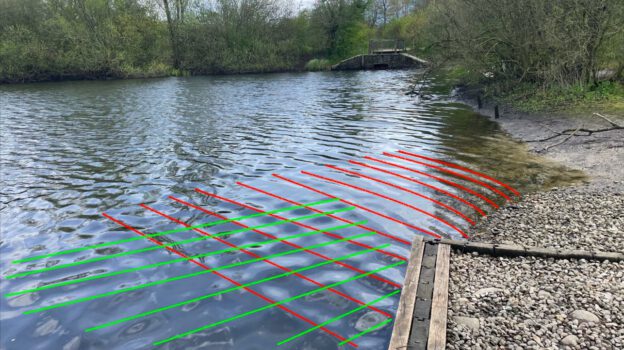
You might remember this edge here and the reflection situation.
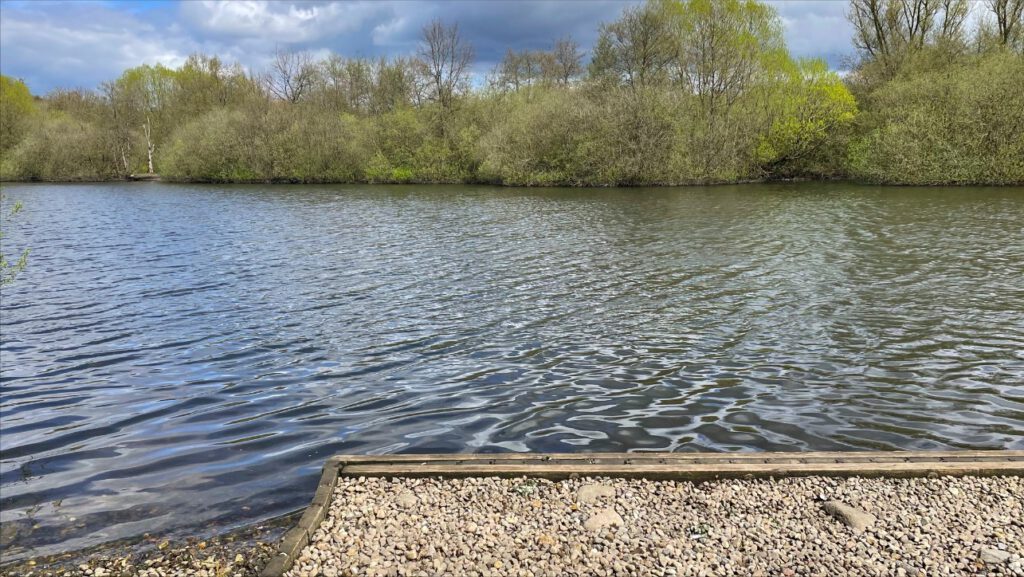
More details in this recent post, but in a nutshell: The wave crests marked in red are approaching the beach and wooden edge, and where they hit the wooden edge, they get reflected and converted into the green wave crests which propagate away from the edge again.
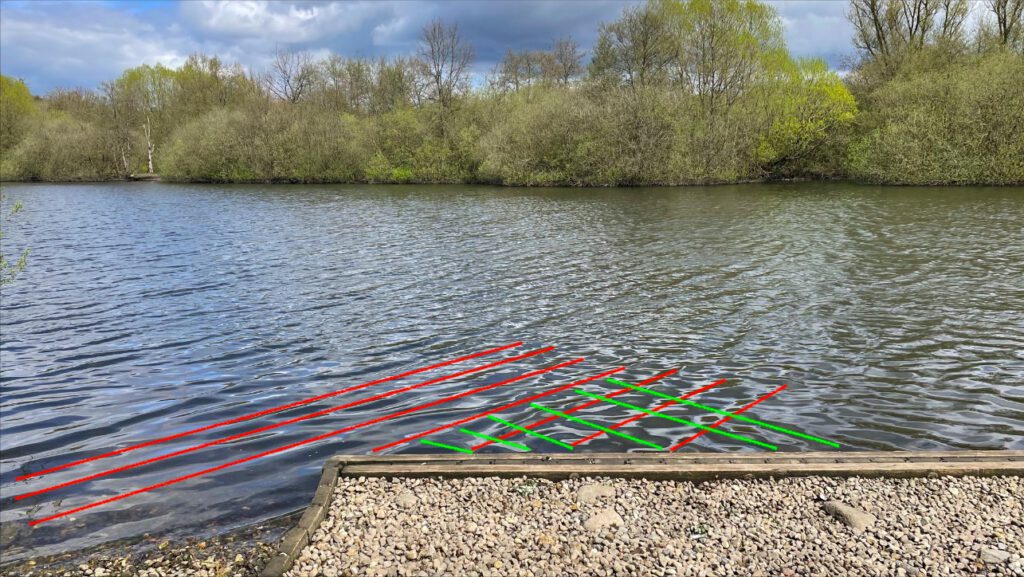
And this is what the other side of the edge looks like: The reflections end where the edge stops!
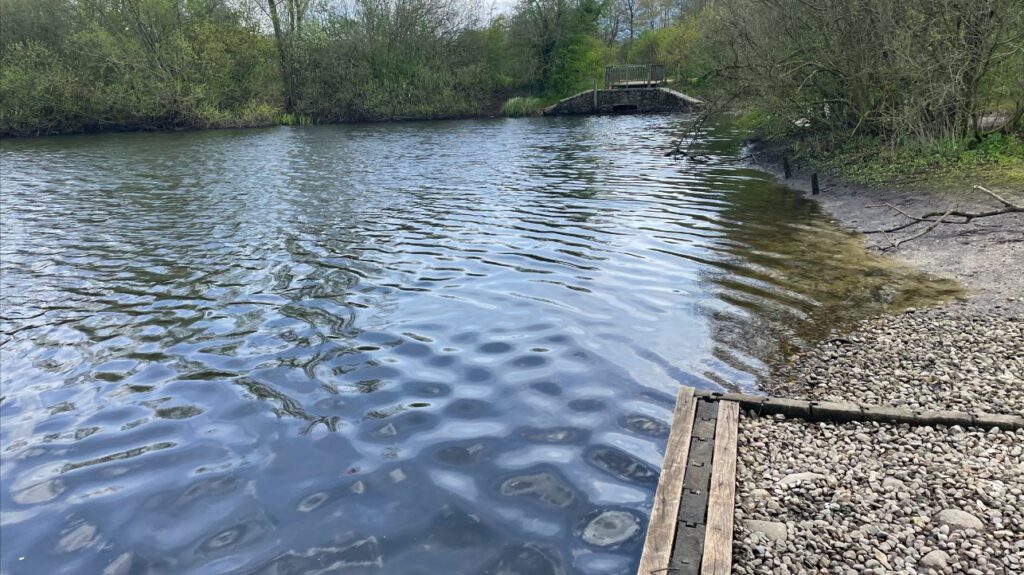
Again, the red wave crests are the incoming waves, and the green the reflections. Waves always travel perpendicularly to their crests, so you see how they propagate away from the boundary and appear to be cut on the right side where the boundary suddenly stopped and no reflection could happen any more.
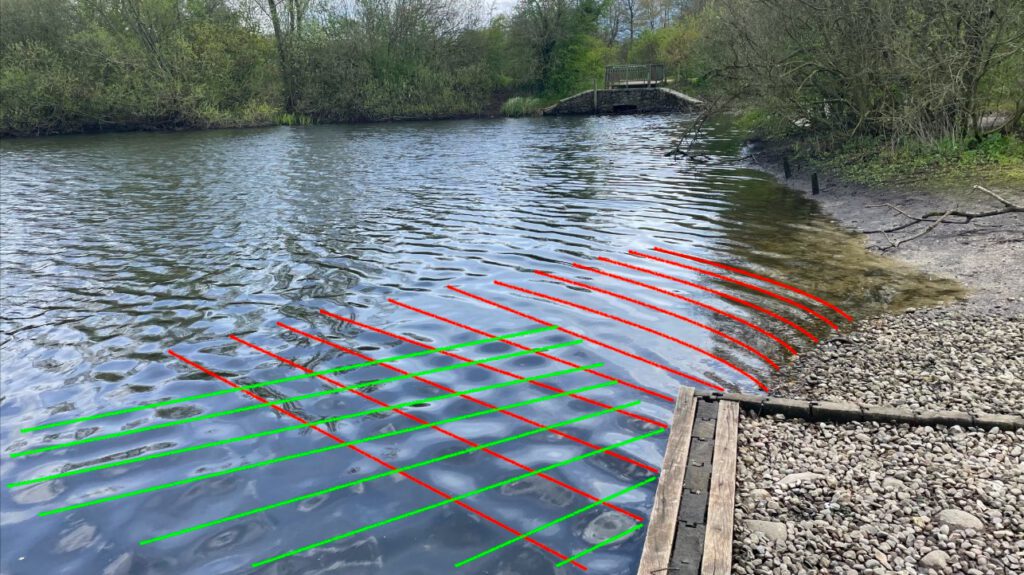
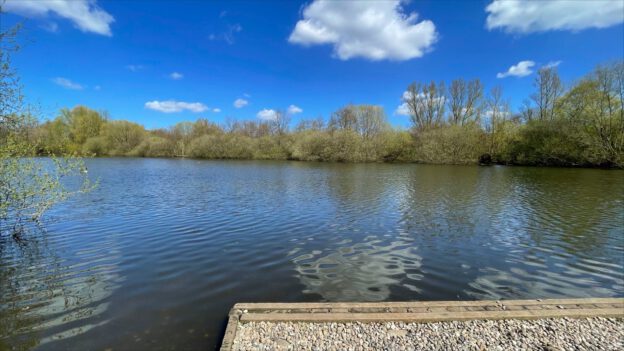
When I look at the picture above, I see basically three different zones on the surface of the lake.
The yellow zone, which is under the direct influence of the wind, where the water is full of small waves, and then two other zones.
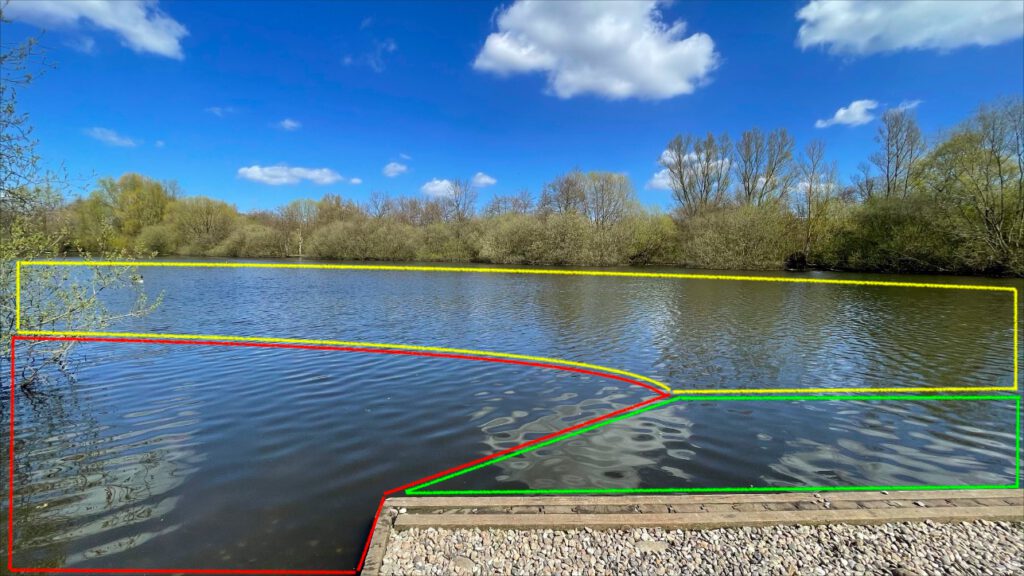
In the red zone, the water isn’t under direct influence of the wind any more, we see clear, parallel wave crests propagating towards the shore. I’ve marked some of them below.
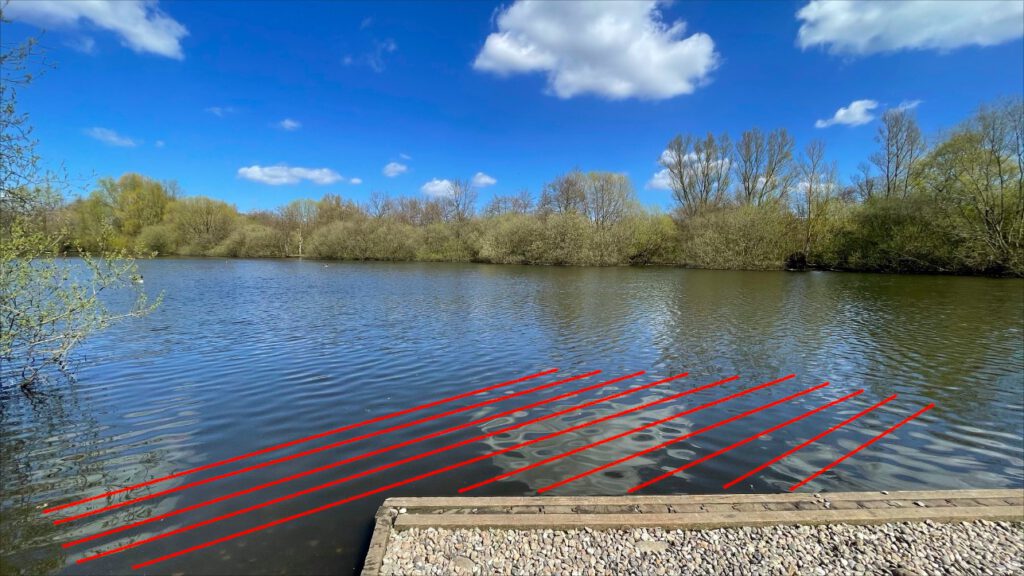
While they are still to the left of the wooden edge, not much happens. But once they hit the edge, we enter the “green zone”: The incoming wave crests get reflected at the wooden edge. They start propagating out onto the lake, getting longe and longer over time, while the red wave crests continue running further and further into the green zone, so we get interference between the incoming and reflected wave crests. Pretty cool! :)
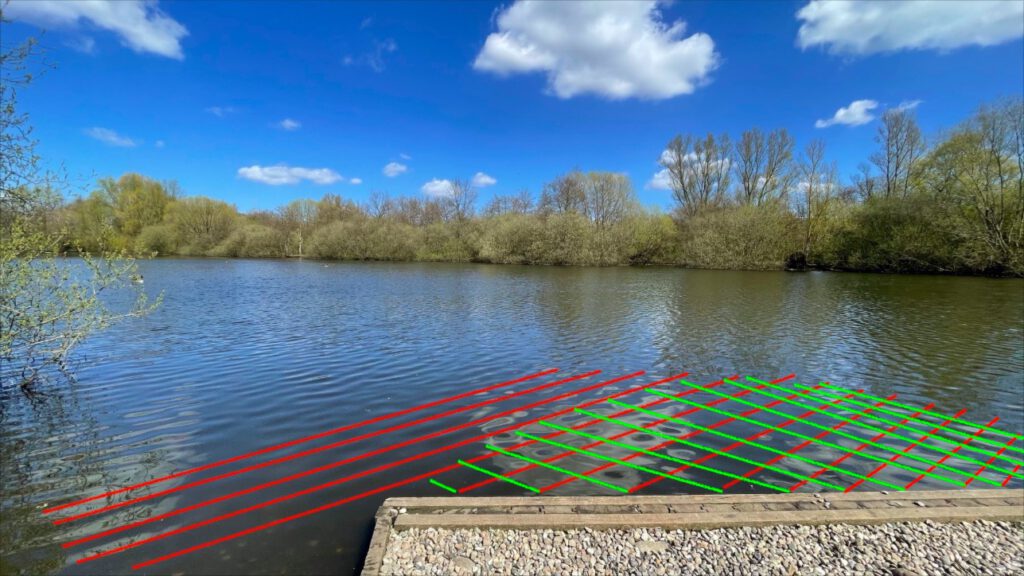
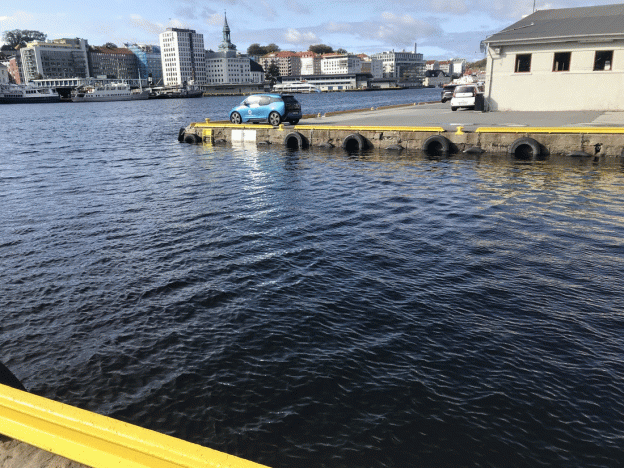
Oh look, someone built a perfect rectangular wave watching basin into Bergen harbour!
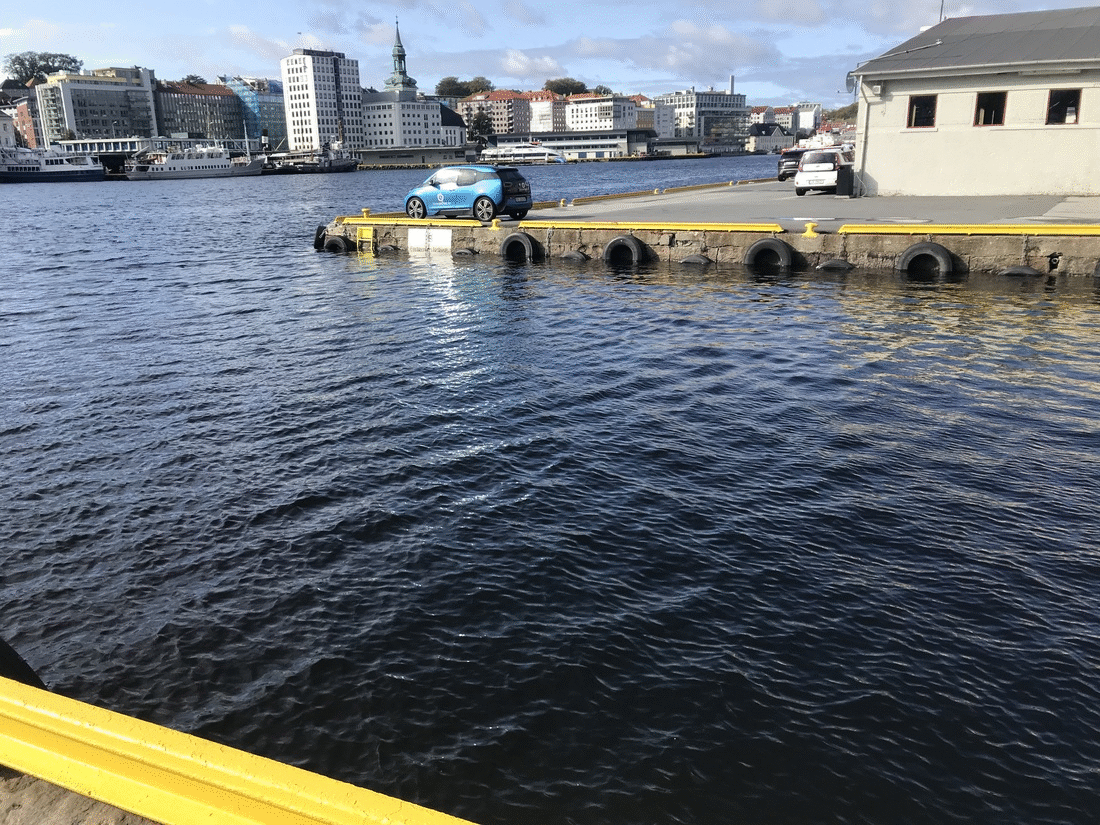
As you see above, waves are propagating towards this little wave tank and into it. They then get reflected at the edge at the bottom of the picture. Then, the original incoming wave and reflection propagate together further into the basin. They are now forming V-shaped wave.
This leads to this really cool interference pattern in the basin: Lots of seemingly disconnected little hills and valleys in a checkerboard pattern.
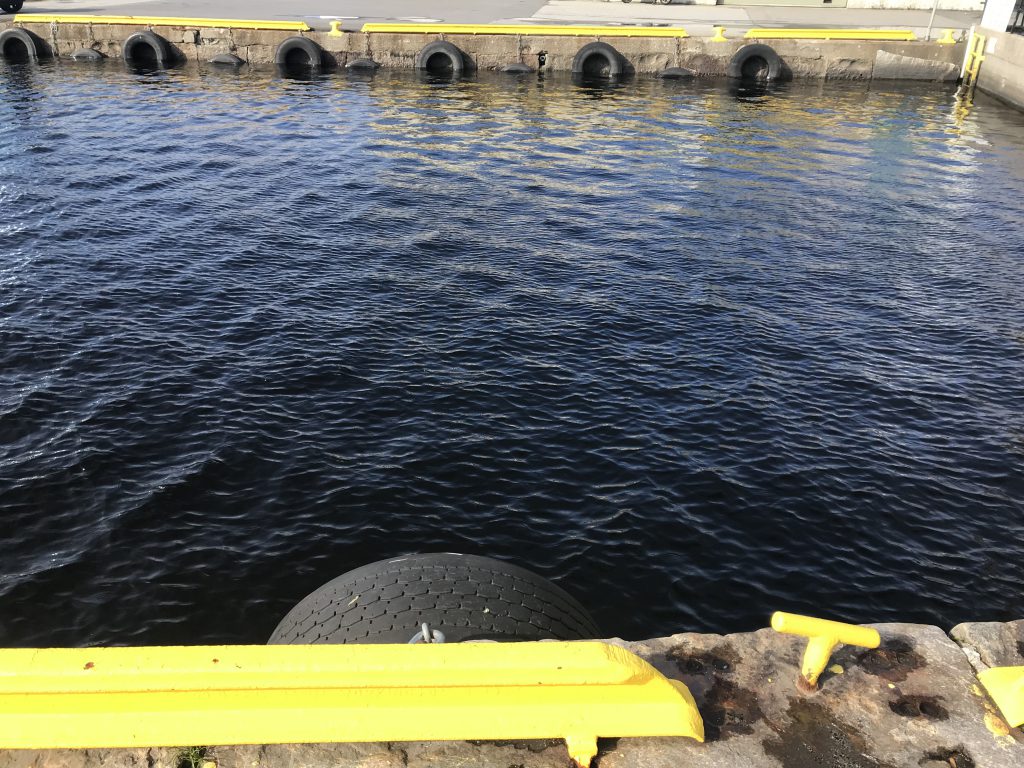
It looks even cooler when moving! Because it’s so difficult to track individual wave crests and the hills and valleys seem to just be appearing and disappearing randomly:
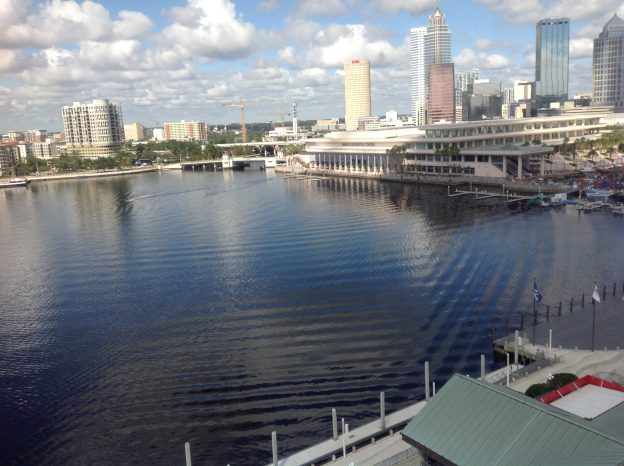
Anyone who might be new to my blog because of yesterday’s presentation at #SiPManc — please don’t be scared and run away, this is the most complicated #friendlywaves I have ever gotten, usually things are A LOT easier! :-)
I love #friendlywaves! Victor sent me the picture above. He took it in 2017 in Tampa, Florida, and I think it’s so fascinating! There is so much going on, let’s try to make sense of it!
First, the most obvious thing making waves here: The two boats. Clearly they are making waves, and they might explain a lot of what we see here. But on the other hand, they might not.
Below, you see the part of the wave field that is 100% due to these two ships: Their V-shaped wakes (in red) and the turbulent wake behind one of the ships (in yellow).
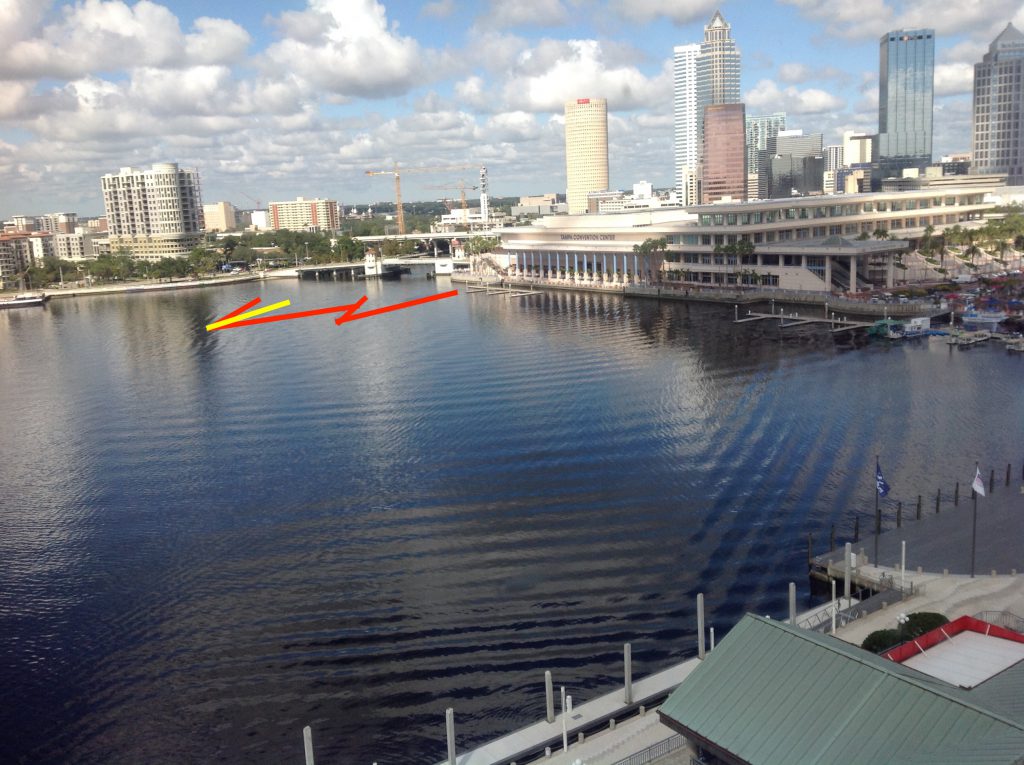
The very prominent wave pattern (marked in red in the image below) might be due to these two ships as was suggested to me, but if it is, then those ships changed course quite drastically before they created the waves I marked in the previous picture (and I can see no evidence of such a change of course, usually a turn would leave a trace similar to this one).
If the boats, as I assume they did, came out from underneath the bridge and sailed in a more or less straight line (and that seems to be the case judging from their wakes as indicated in the picture above), there is no way they could have made waves that travel in front of their V-shaped wake. Similarly to how you can’t hear the supersonic aircraft before the supersonic boom (because the sound can’t travel faster than the speed of sound and the pressure signal thus gets formed into the Mach cone), waves can’t outrun their wake (which is like their 2D Mach cone). So I don’t believe that those waves were made by those two ships. Rather, I believe that they were made by a ship that is no longer visible in the area we are able to see.
So remember, this is the wave pattern we are trying to explain (Marked is only one wave crest, but you see that there are several parallel to the marked one):
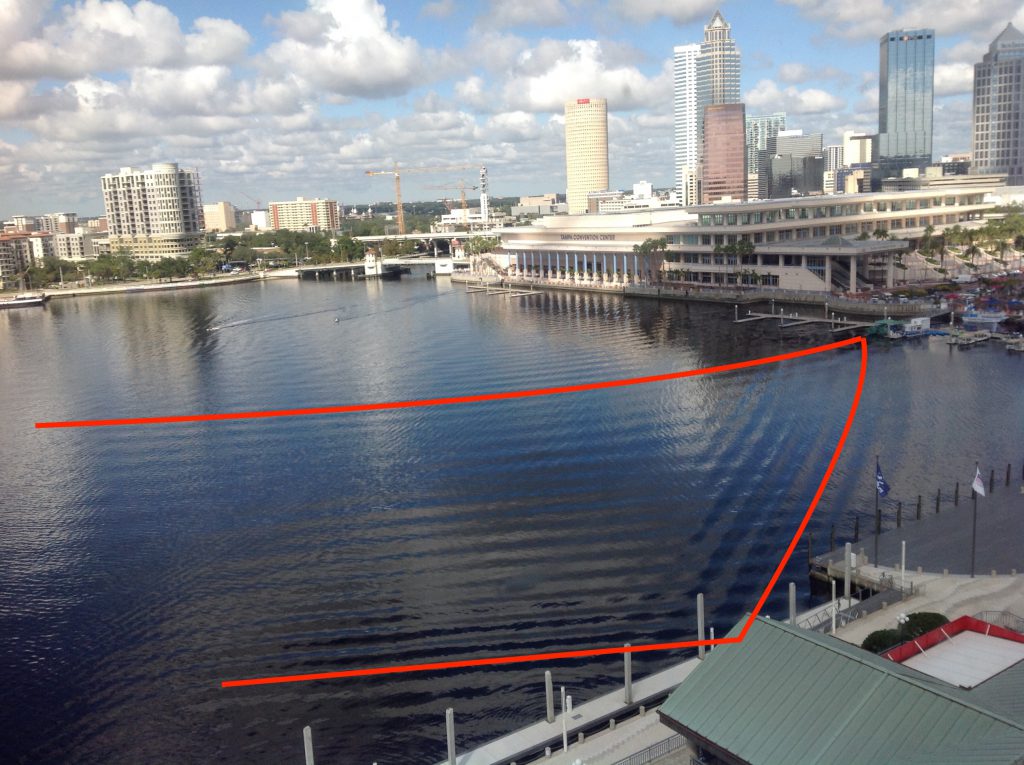
We do nicely see how the wave is reflected by the straight sea walls. But what direction is it traveling in? And what caused it? Let’s speculate!
First: let’s consider the very weird shape of the body of water shown in the picture. Quick search for Tampa on Google Maps lets me believe is that the picture was taken more or less from the position of the white star and the view is the area between the two red lines. Looking at that map, we see that the water we see opens up into four different water ways: One to the north, one to the east, one to the south east, and one to the south west. The two to the south eventually open up into Tampa Bay.

The wave field that we are trying to explain would look somewhat similar to what I drew in below (green):
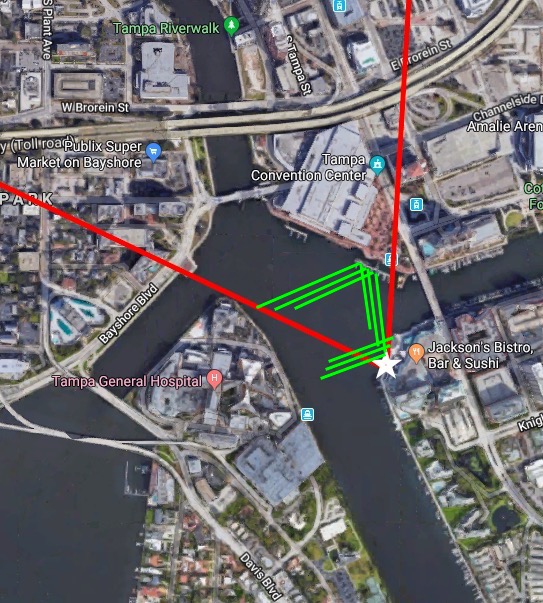
My best explanation of that green wave field above is this: A boat that went on the course that I drew in in yellow:
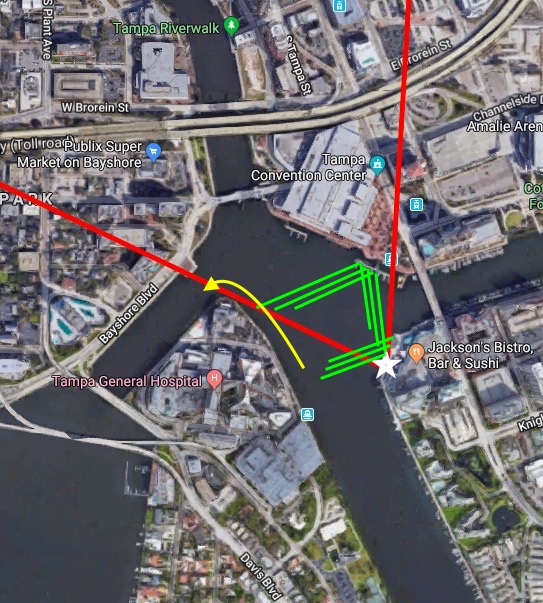
So far, so good. Wanna know why I believe this is what happened? Then this is the picture for you!
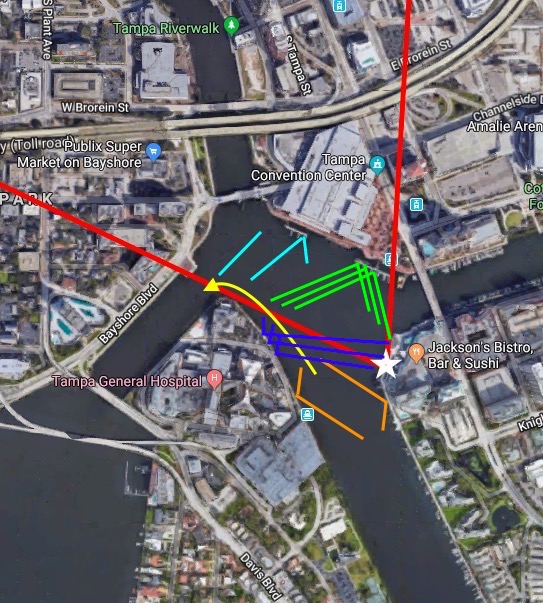
Assuming the boat followed along the yellow track, the other lines are the wake it would have produced:
This is the best explanation of what must have happened that I can come up with, and I have thought about this quite some time (more on that at the end of this post) :-)
But then there are tons of shorter wave length waves that we have to explain, too: See those marked in red, yellow and green below.
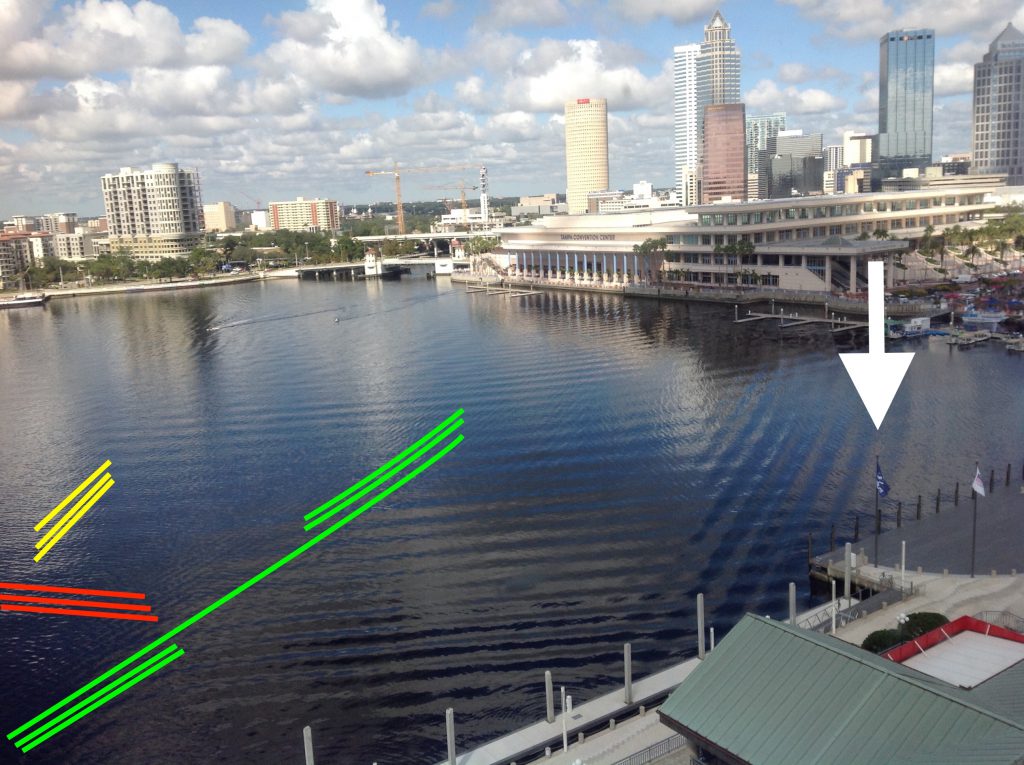
I am confident that the ones I marked in red are wind-driven waves coming across the open area. Their direction also agrees quite well with the wind directions the flags indicate (marked with a white arrow above). I believe that the ones I marked in yellow and in green are two separate wave fields at a slight angle, but that might be an optical illusion, I am not quite sure.
If we go back to the map, I believe the wave fields I marked above would look pretty similar to the ones I drew in below (I changed the red waves above to magenta waves below, because red was already taken. Note the wind direction marked with a white arrow: it looks pretty much perpendicular to the now-magenta wave crests):
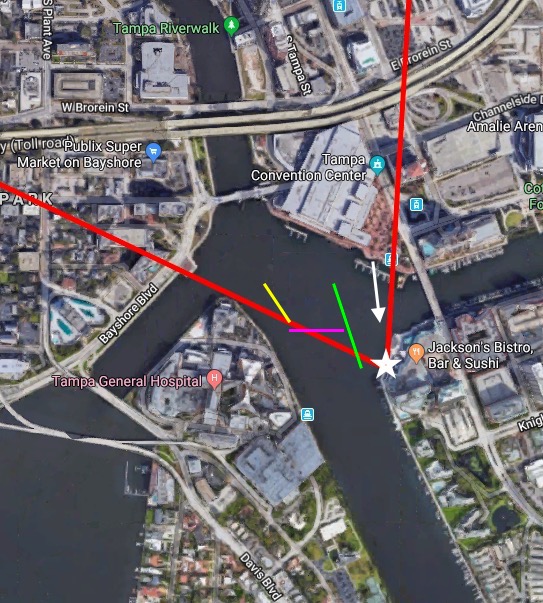
And looking at the angles in that depiction of the waves, I could imagine that the green wave field is a reflection of the magenta wave field where that one hits the shore on the side where the picture was taken from (see light blue wave crests). As for the yellow one: I still have no idea what caused that. But maybe there need to be some mysteries left to life? ;-)
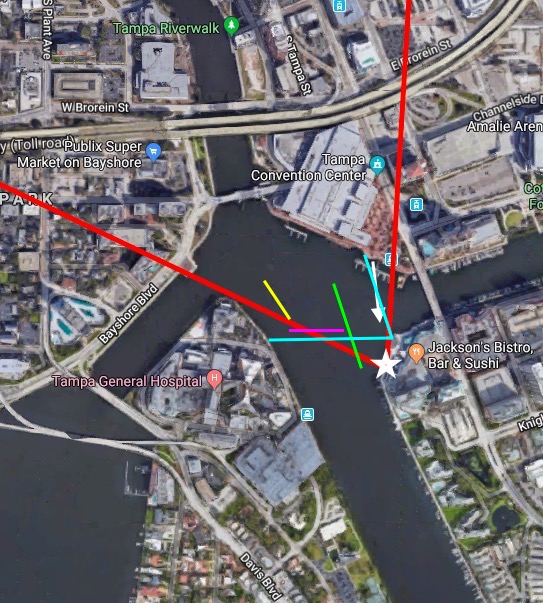
To end on something that I am confident in: The half circles near the bottom of the picture are the result of something (two buoys? two small boats?) moored on that pier, bobbing up and down in the waves, thus radiating wave rings with shorter wavelengths and higher frequency than the wave that is exciting the movement.
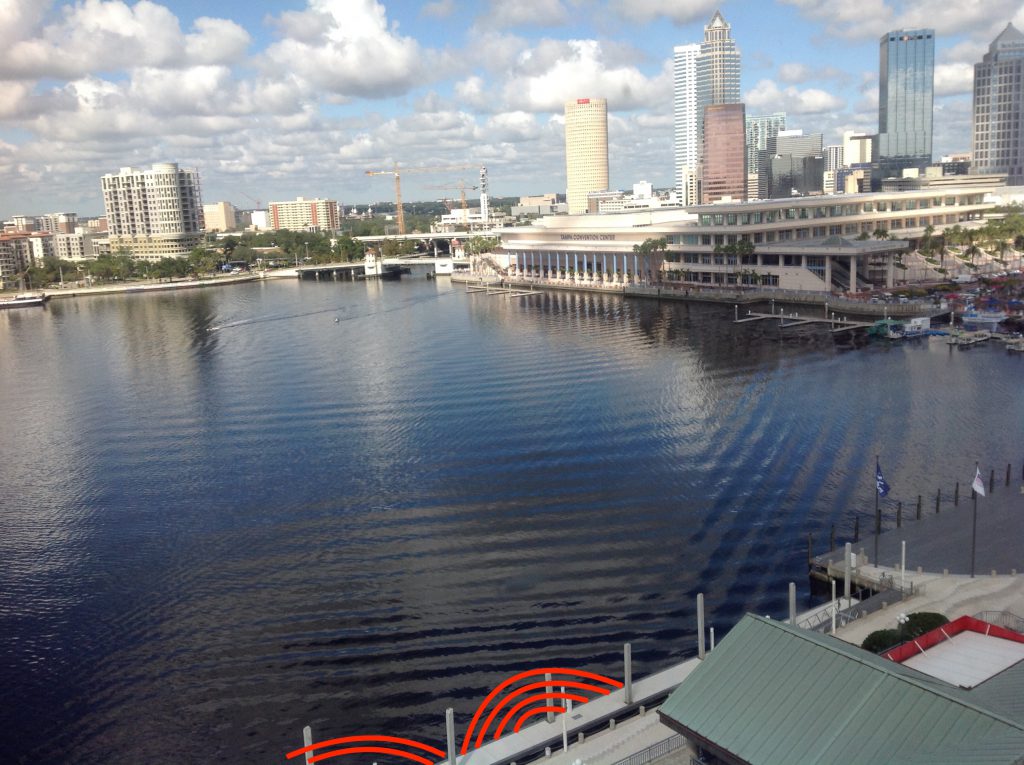
But after all this hard work (more on that at the bottom of this post) — let’s take a minute and look at those beautiful interference pattern again where the wave fields cross each other and create a checkerboard pattern. How amazing is this?
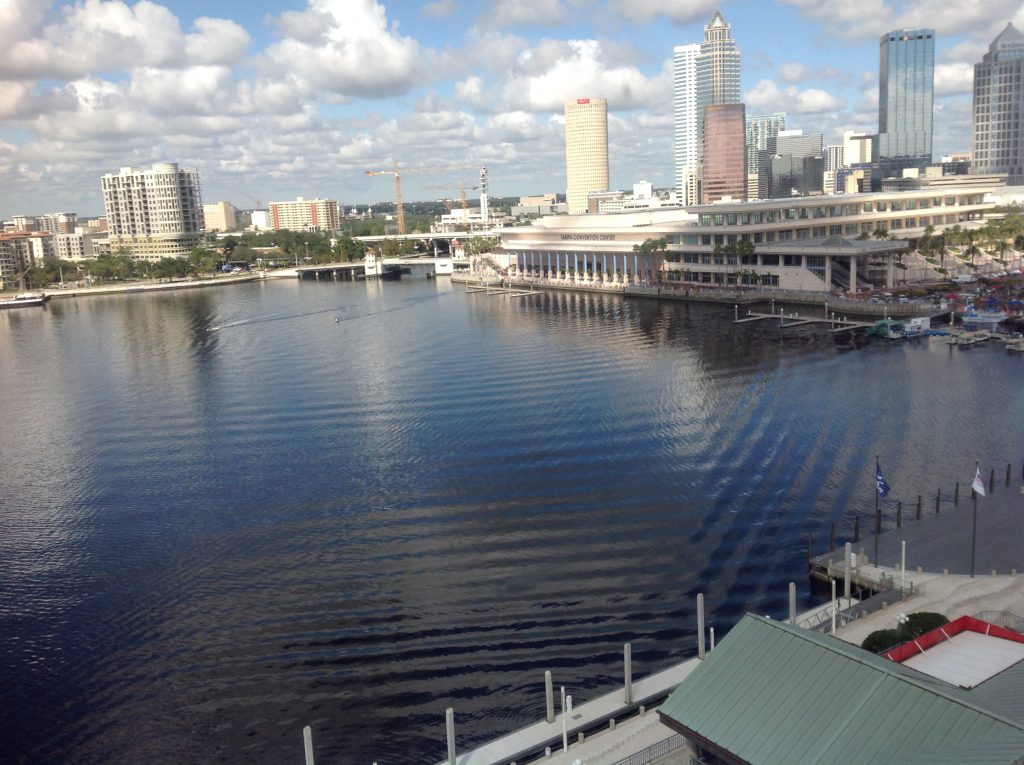
Phew! I love #friendlywaves, but this was quite a challenge! How did I do, Victor? :-)
If you or anyone else have any comments or suggestions — I would love to chat about alternative explanations!
P.S.: Just to give you an idea of what my process was like: It involved late night scribbles on a tea bag (because that was the best “paper” I had available on my bedside table in the hotel in Manchester) and I needed to play scenarios through in my head…
 …and some sketches on my phone while I was on a train…
…and some sketches on my phone while I was on a train…
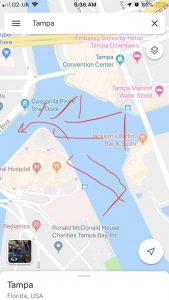 This is how much I love wave watching! :-)
This is how much I love wave watching! :-)
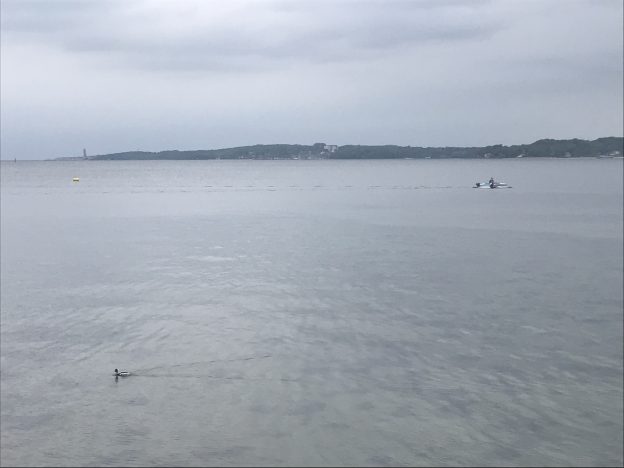
This is the blogpost I wanted to write today before I got distracted by all the adventures on MS Stadt Kiel with sightseeing and swing dancing and all the good stuff that wasn’t wave watching. I had even uploaded all the pictures of this morning’s wave watching walk on my blog already, but then things just got too exciting… But here we go now!
Here we see a really nice example of shallow water waves: The wavelength is a lot longer than the water depth and the shape of the waves looks very different from the almost sinusoidal waves in deep water: The troughs are very long and the crests short and steep.
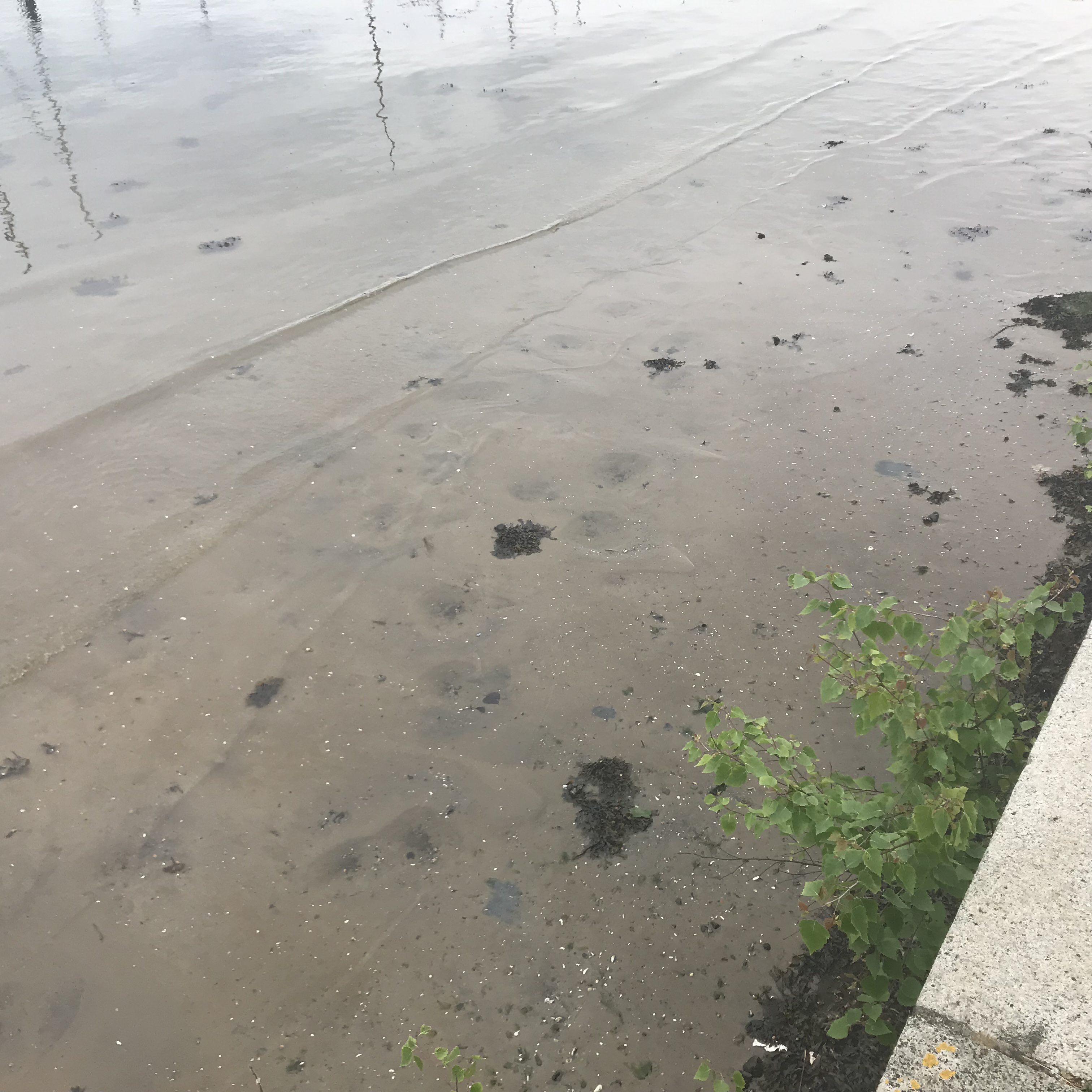
And here they show the influence of water depth on phase velocity: Where the water gets shallower and eventually the land falls dry, the waves get slowed down. This means the part of the wave crest that is still in deeper water is faster, overtaking the shallower part, and thus the waves get bent around, towards the shallower areas in the water.
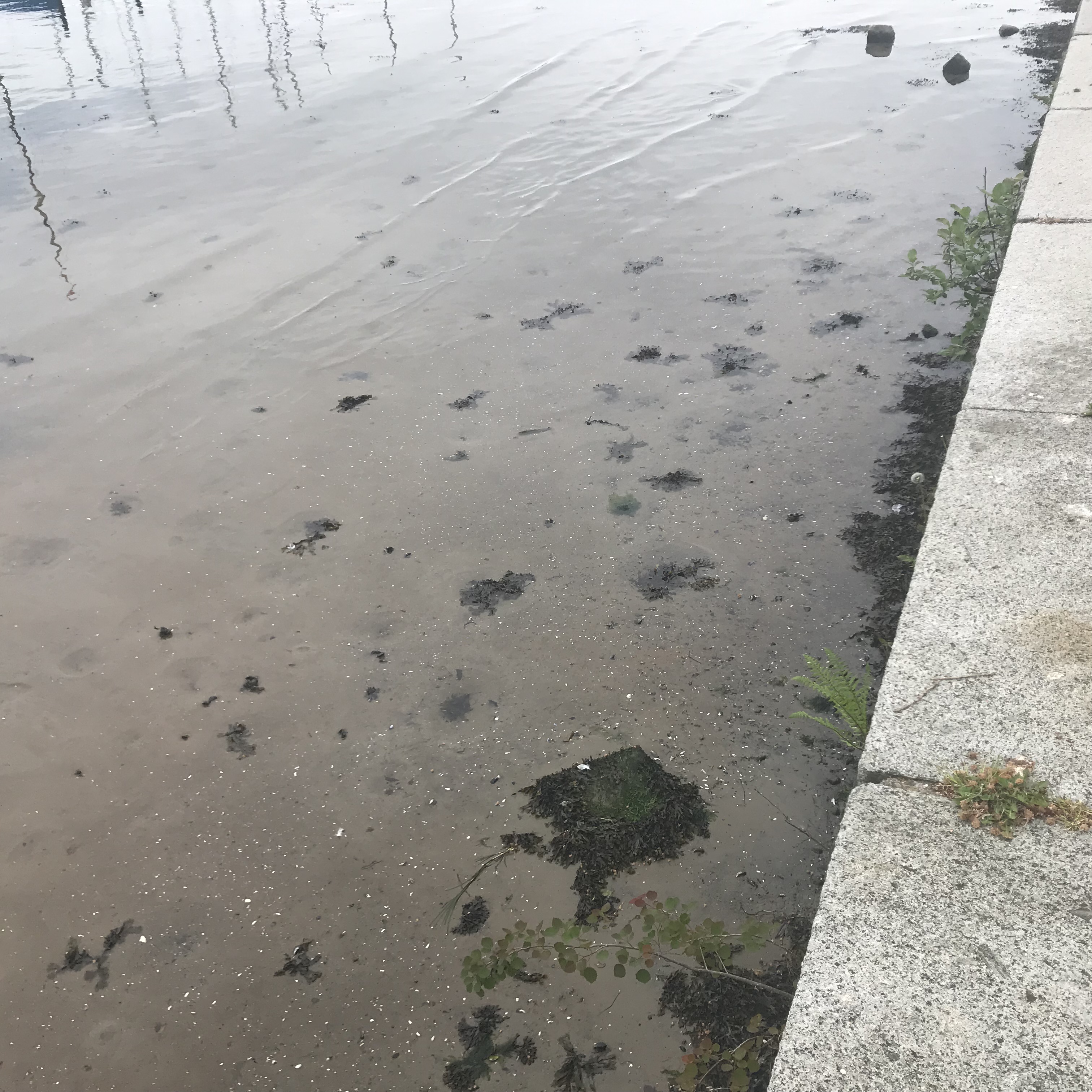
For comparison here the shape of waves in deeper water. Do you see how they are much more sinus-shaped?
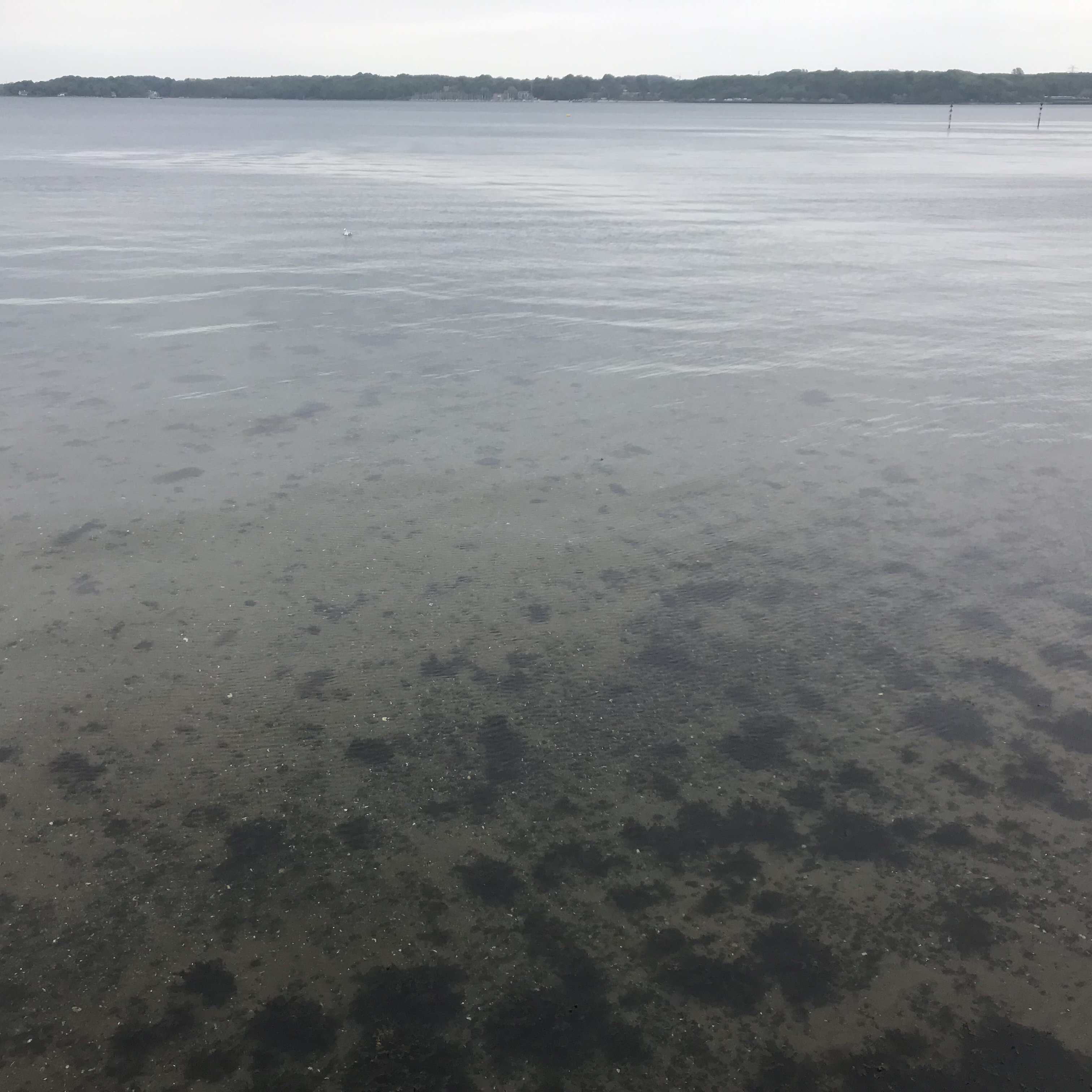
Above we also see fairly well how gusts of wind change the water’s surface roughness: where the water surface looks darker, it is covered in small capillary waves caused by gusts of wind.
Btw, if you were wondering where the longer wave length waves came from: They are the wake of a boat accompanying the training session of some race kayakers.
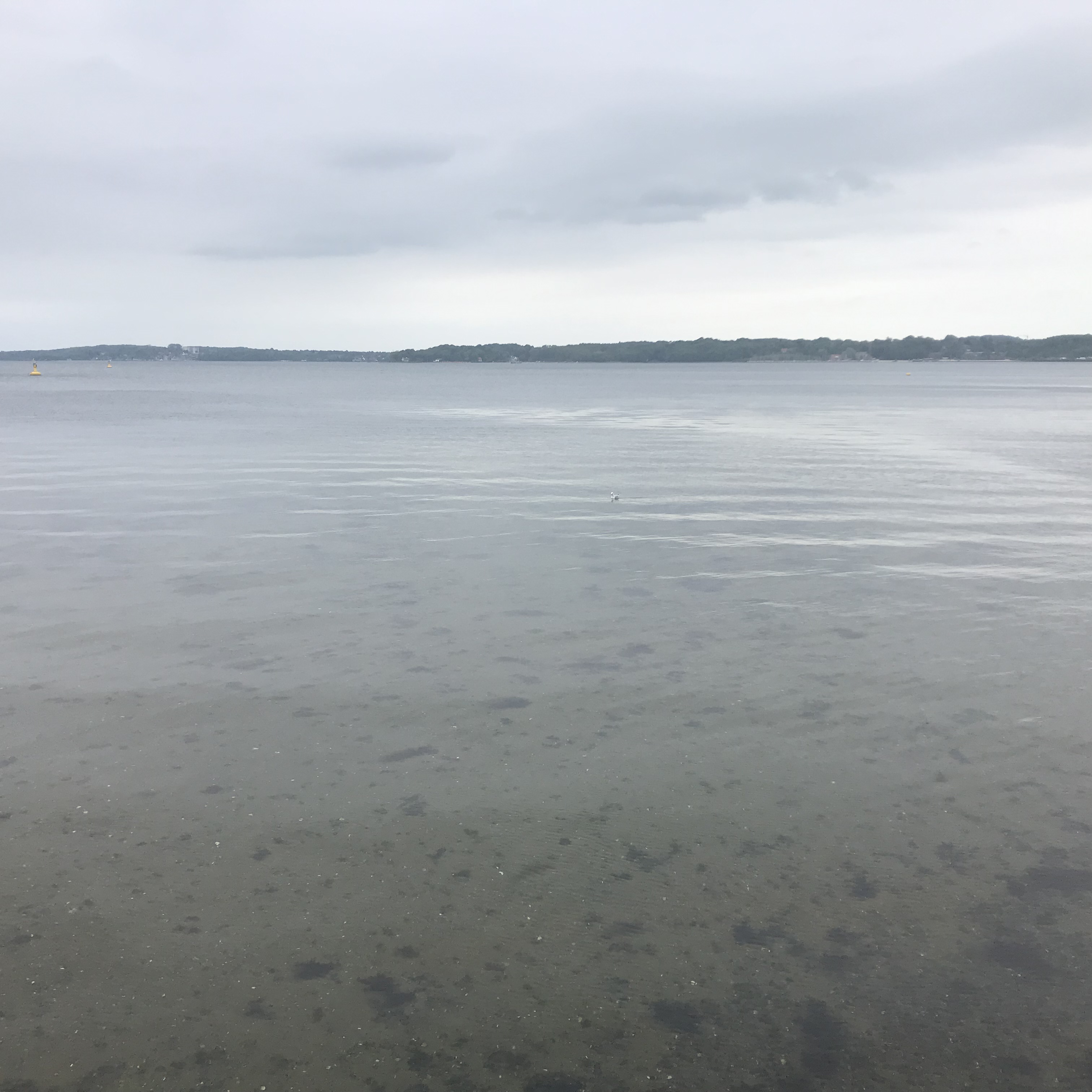
When those waves hit the sea wall, we see nice reflections and a checkerboard pattern!
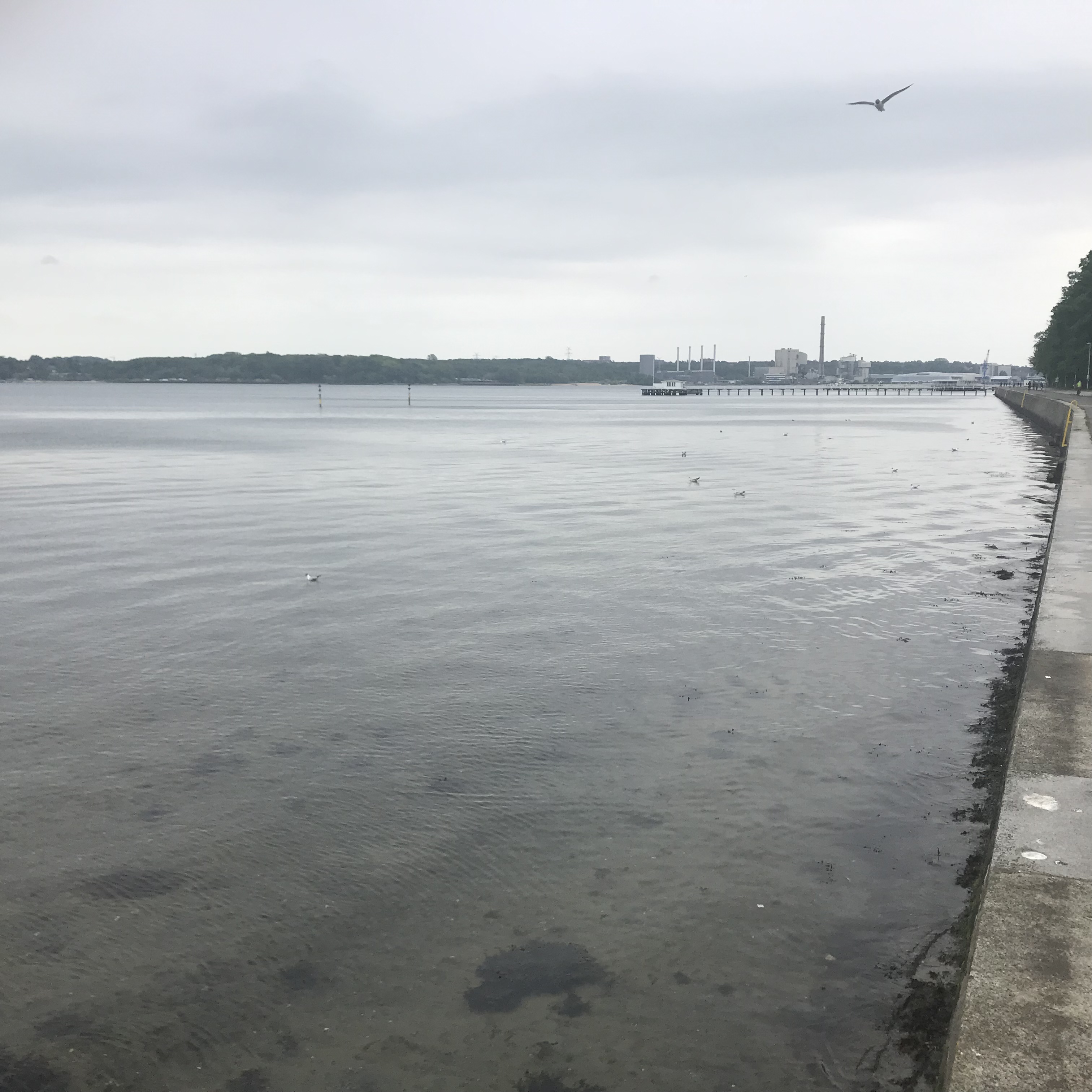
Btw, I find it super eye opening how the structures that, to me, absolutely dominate the picture above are not picked up as dominant in my comic app (see below). Of course the structures of the power plant or sea wall are more prominent, but the criss cross of the reflected waves is hardly visible. Maybe that’s how little it is visible to most people even in the photos? On my Instagram poll on whether comic-y-fying pictures helps to show what I am talking about, 60% of the responses were that yes, comics make it easier to see what I mean. Not quite sure yet what I will do with that information moving forward…
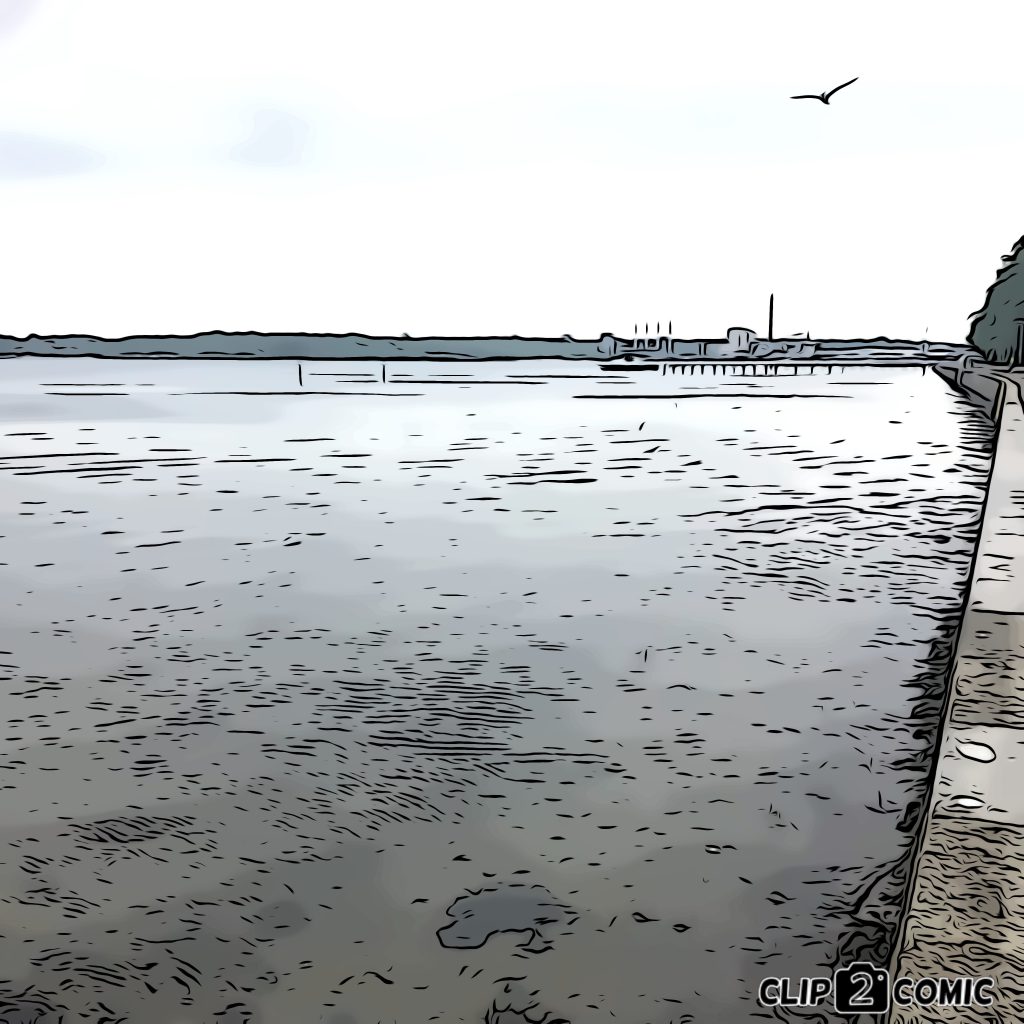
Something else really curious today, btw: The way the sea floor looked! Usually there are lots of ripples here, mostly parallel to the sea wall. And today these weird patterns of darker (finer?) sediment. I think I need to observe the sea floor more consciously to figure out what’s going on there!
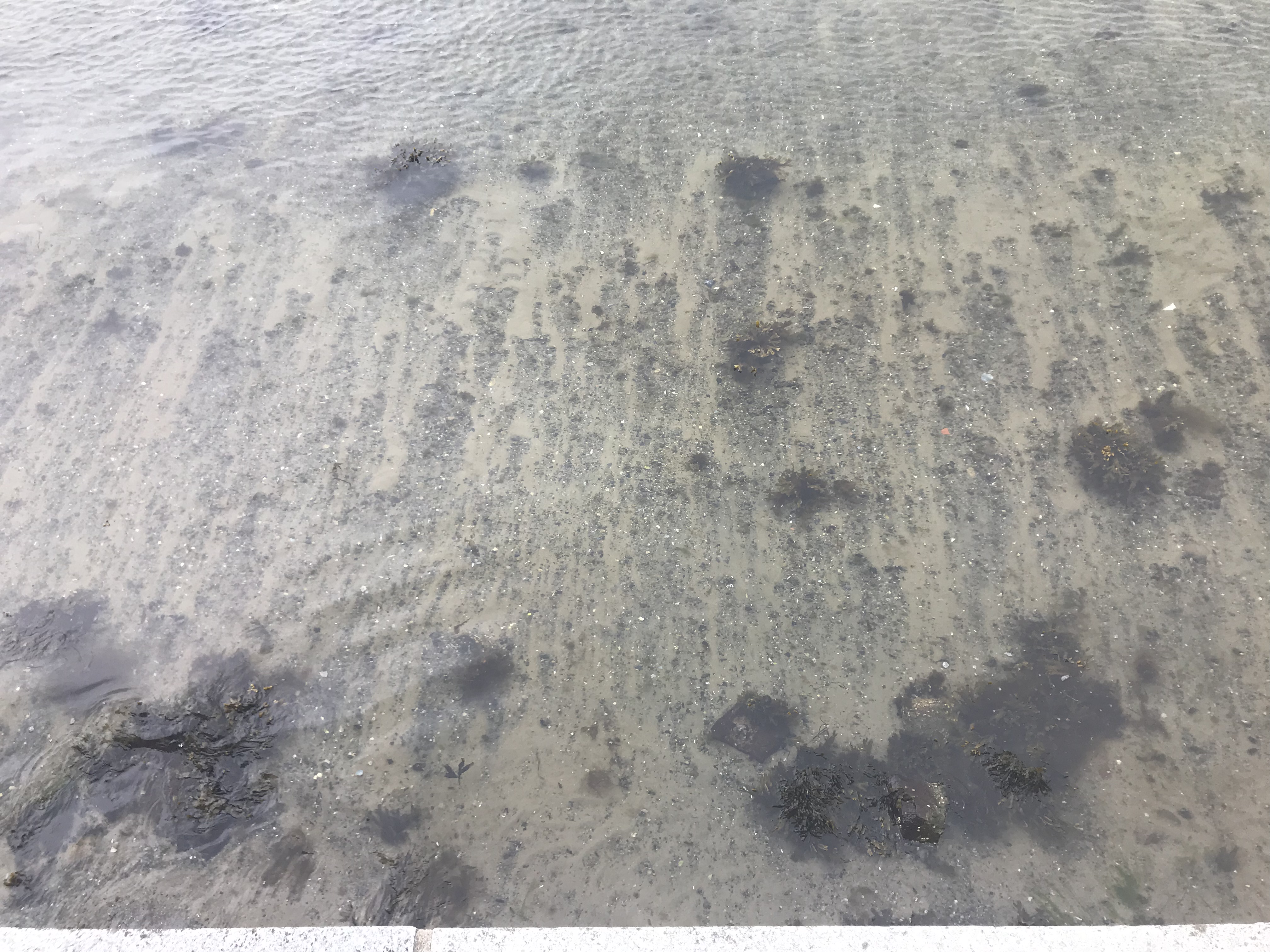
And now the race kayak and accompanying boat are coming back. I love how you see their wake and then that bird’s wake in the picture below!
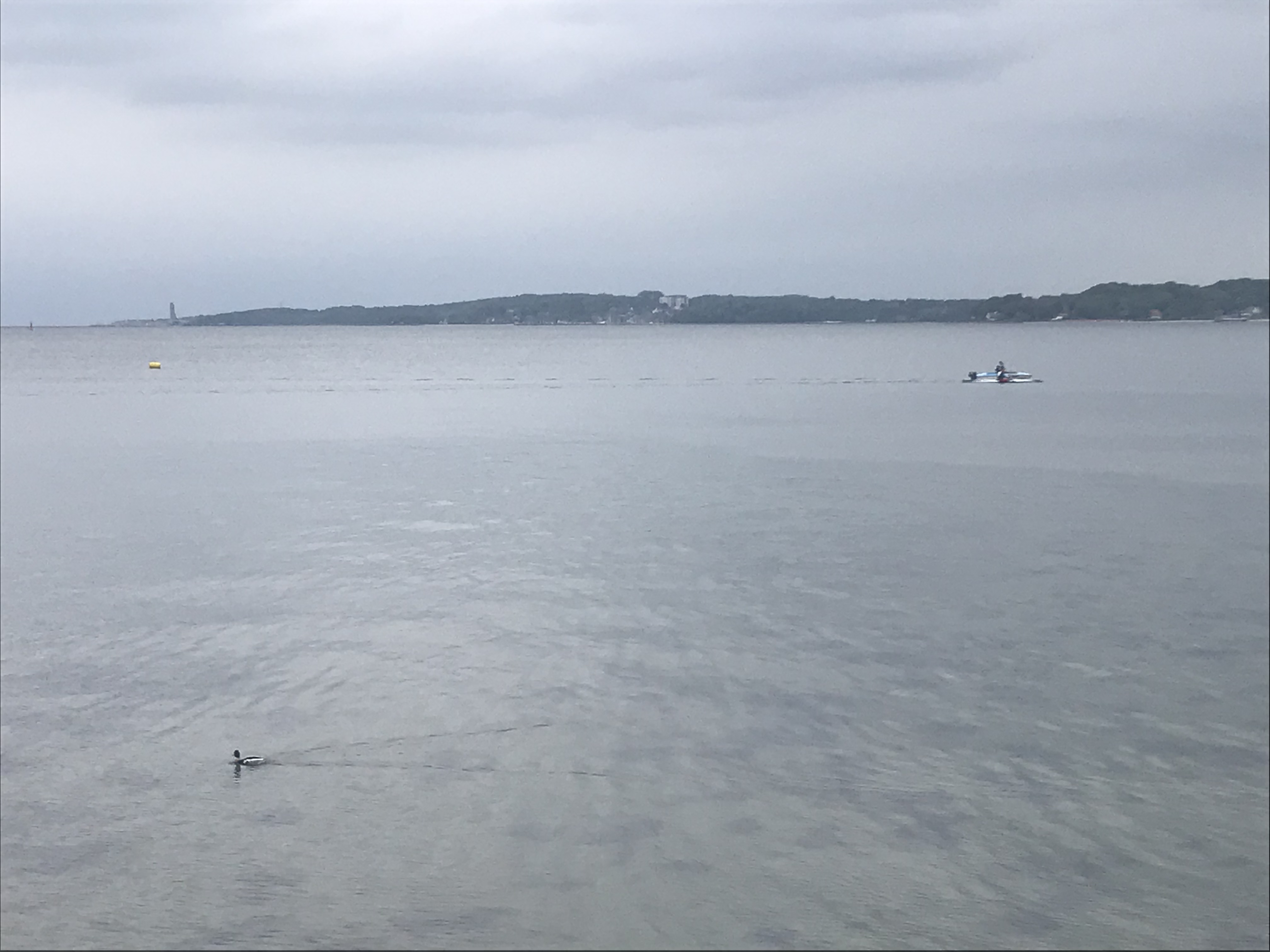
And then, finally, some larger waves, again the wake of some ship that I didn’t pay attention to.
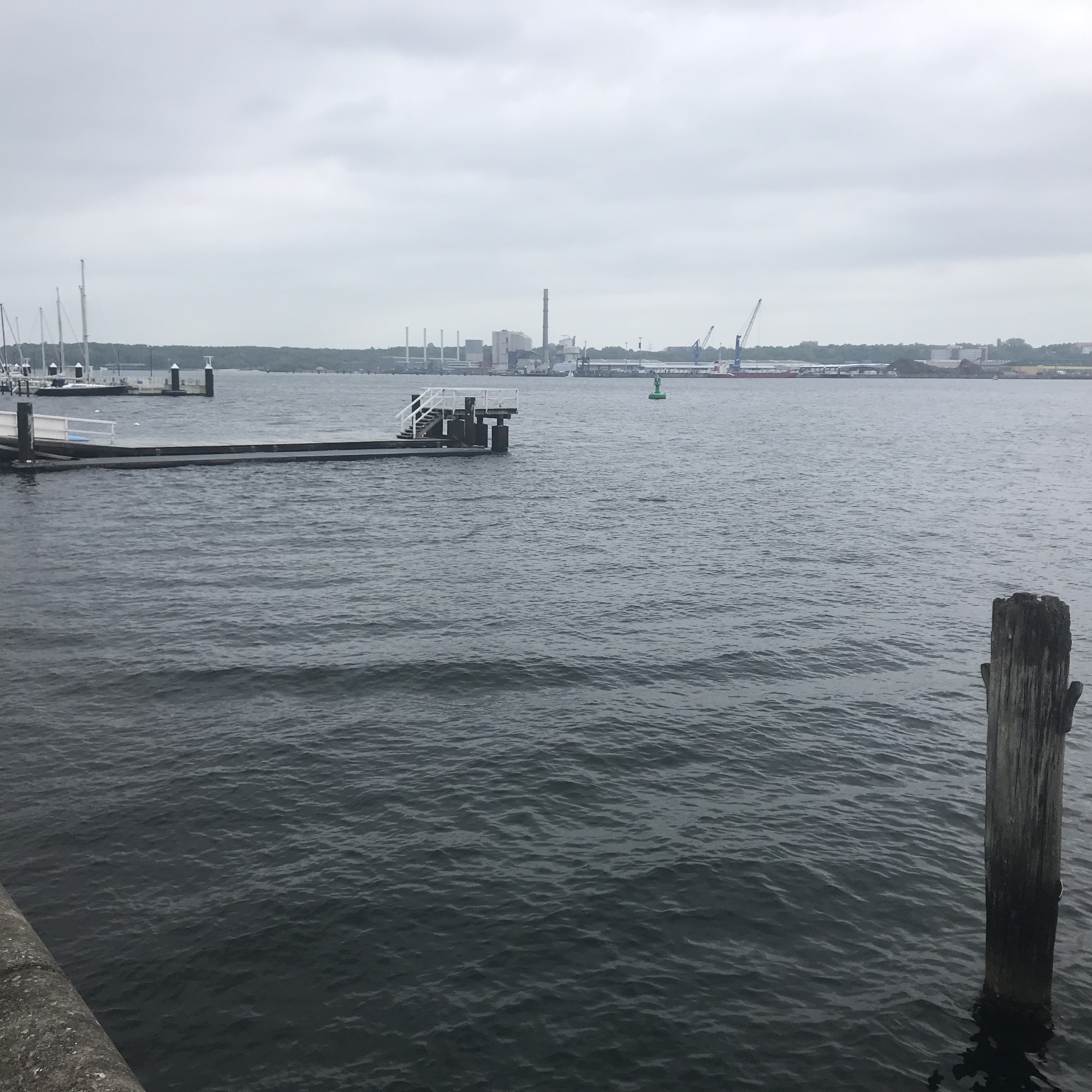
And sometimes, the reflections are just suuuuuper difficult to see when you don’t know what you are looking for. Do you see them in the picture below?
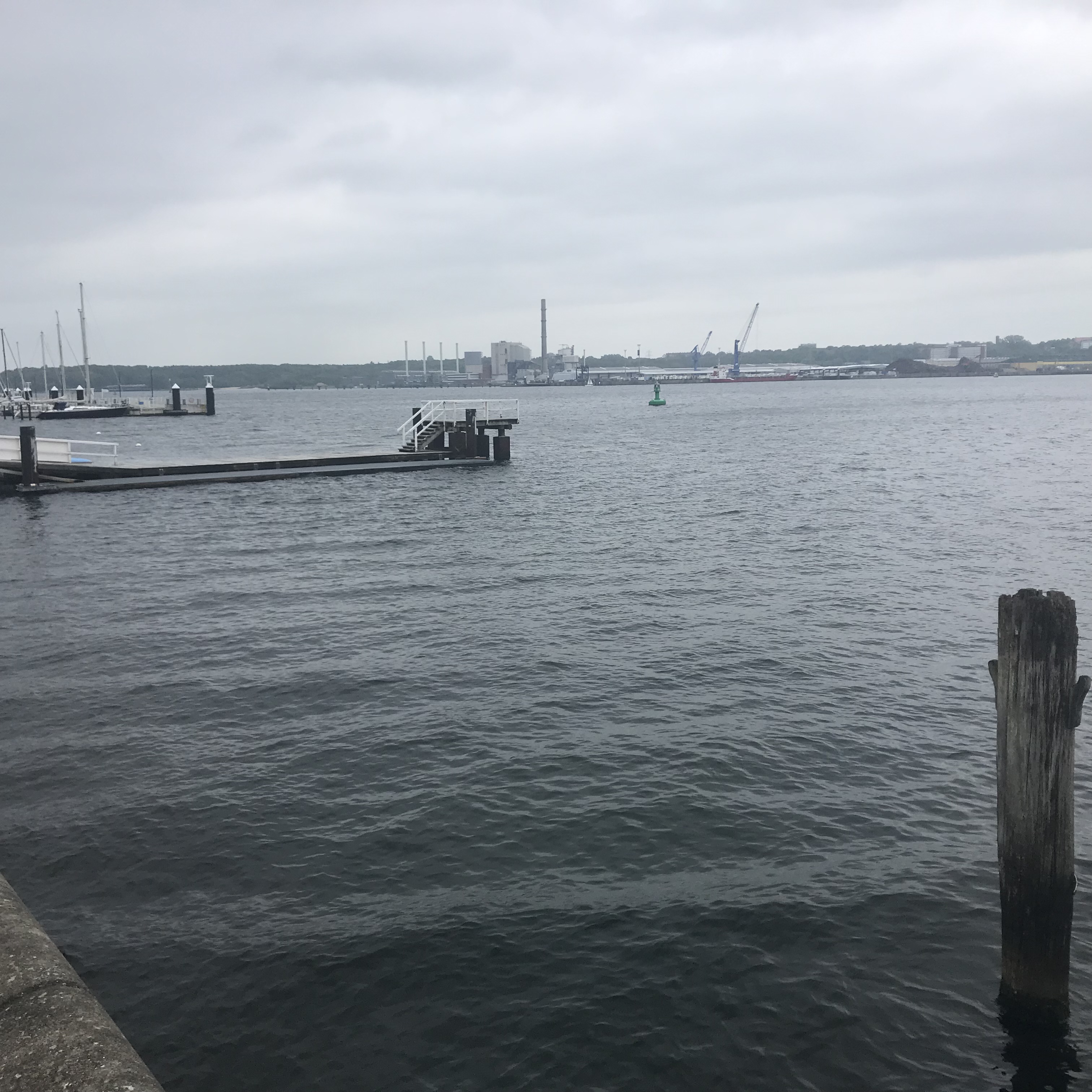
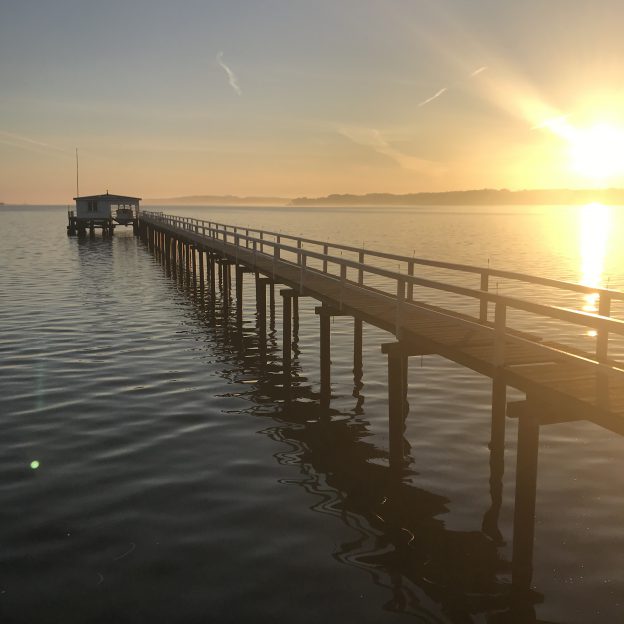
(Disclaimer: The physics the title refers to are somewhere in the second half of the blog post when I am done rambling)
In case you are wondering why I am blogging so much all of a sudden: Sometimes I just love to spend a couple of hours on my sofa, drink something warm, and play with my blog (as I told you I would last Saturday, when I wrote all the stuff that got published recently [technically it’s still said Saturday morning as I am writing this, I am just scheduling all these posts to be published over the next couple of days. I usually select and upload the pictures I want to use on my blog the day I take them, and I always know what I want to write about them, too. In case you were wondering about my blogging process…]). Anyway, moving on.
The pictures for this post were taken a couple of weeks ago, when it was still feasible for me to be at Kiel fjord in the mornings when the sun was this low. Early bird and all, but these days the sunset is too early to just accidentally observe.

What really irritates me is how the condensation trails in the sky look like scratches on the picture. Even though I took the pictures on my phone and then watched them on the phone’s screen (so there is no way they could have gotten scratched somehow) I kept thinking they were scratches. But the pictures are still pretty…
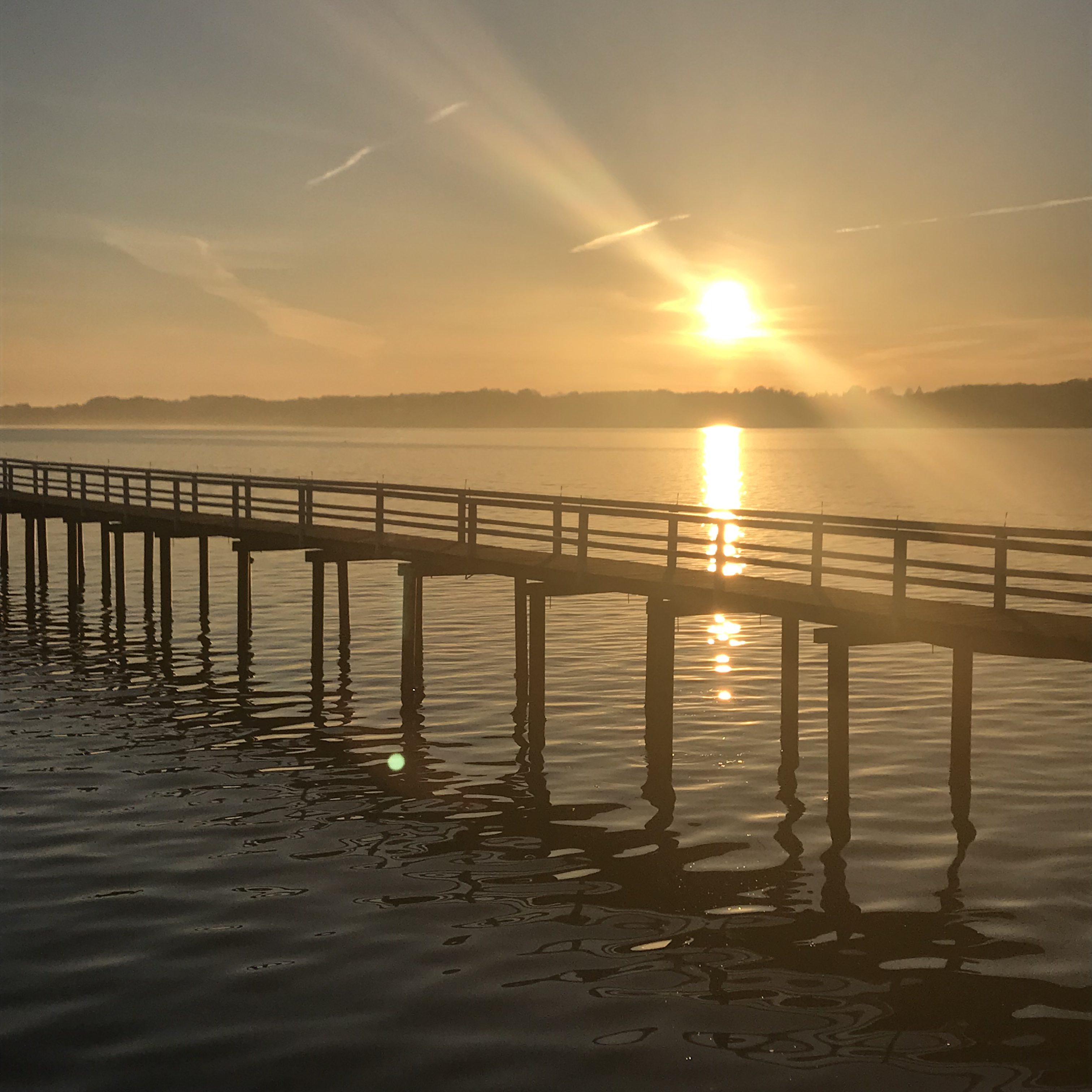
But what the low sun made really easy to observe because of the sharp contrasts between lit and shaded sides of the structure, is how you can actually use the deformation of the structure in the reflection to determine the slope of the water’s surface.
As you know, you can only see the reflection of whatever is exactly in the pathway of the ray from your eye, reflected at the sea surface, and going out at the same angle it came in. Even if you were looking in the same direction all the time, if the slope of the surface changed, what you could see in the very same spot would change, too. Hence if you look at reflections on water, they move and get deformed as waves go past the spot you are looking at…
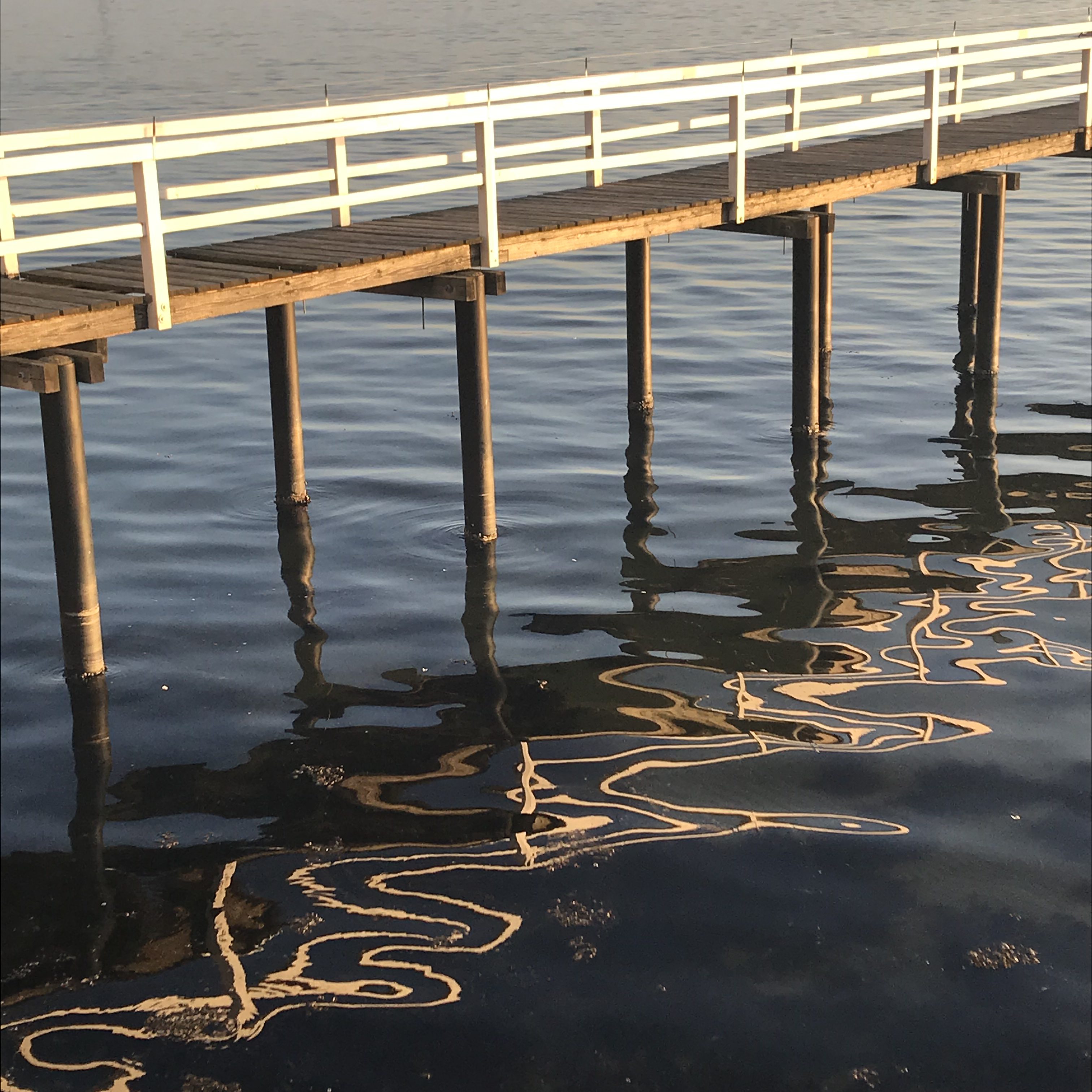
Above, looking at the white hand rail’s reflection, it becomes very obvious that the wave field is actually quite complex. There are waves that pull the hand rail’s reflection out to the right side, and those that move it up and down in the picture. I find it absolutely fascinating how some parts of the hand rail are visible several times in the reflection, how there are even bits of handrail that seem completely detached from the rest (see the little white dot inside a white loop somewhere in the bottom right?) and how the whole thing still seems so organic and smooth.
Below, you even see how you can see how each wave crest relates to a “spike” in the reflection.
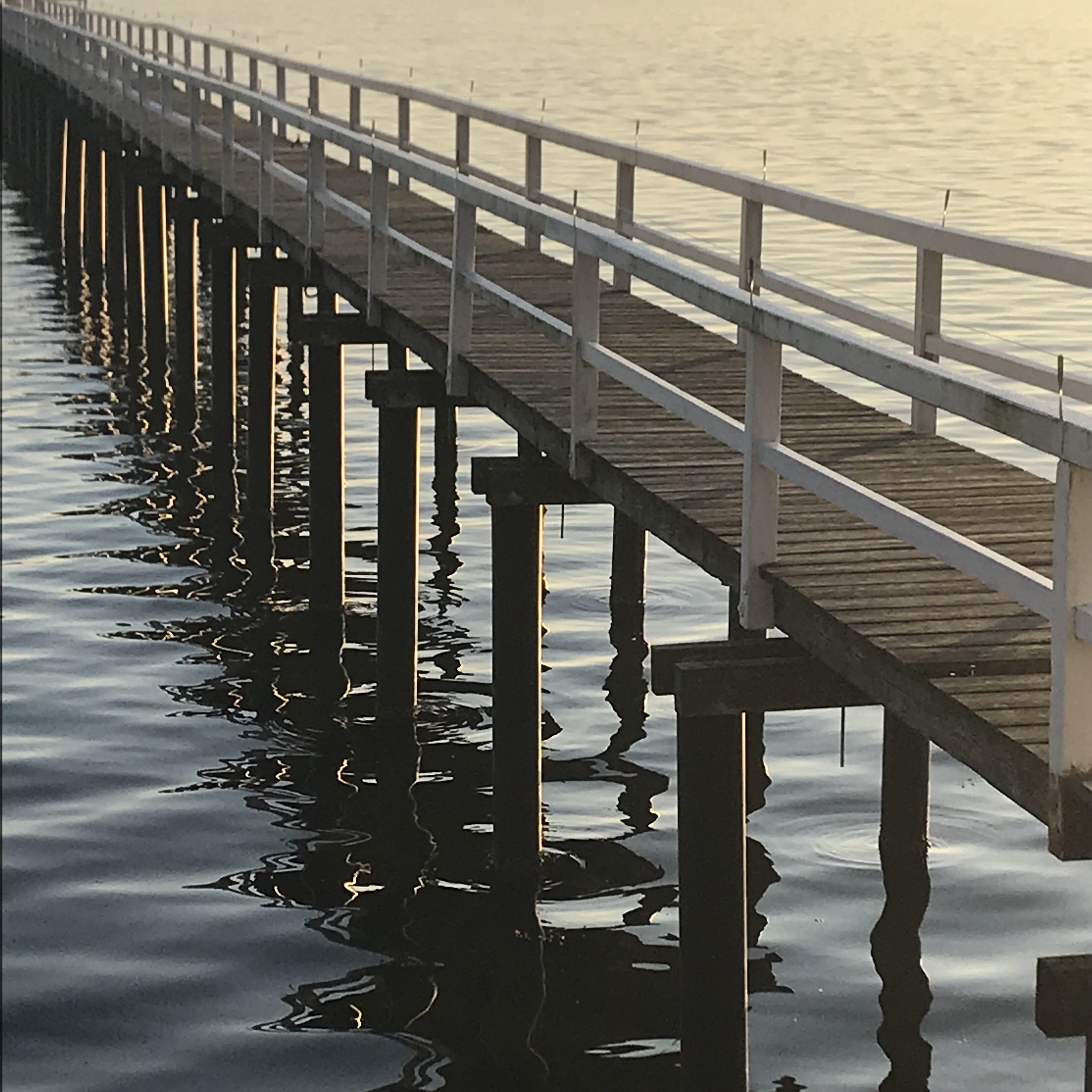
When looking at waves in pictures, it is usually pretty difficult to see which parts of the pictures correspond to which side of the wave, the one facing us or away from us (unless, of course, the waves are breaking, or you see stuff like total internal reflection going on). But the reflections make it a little easier, I think.
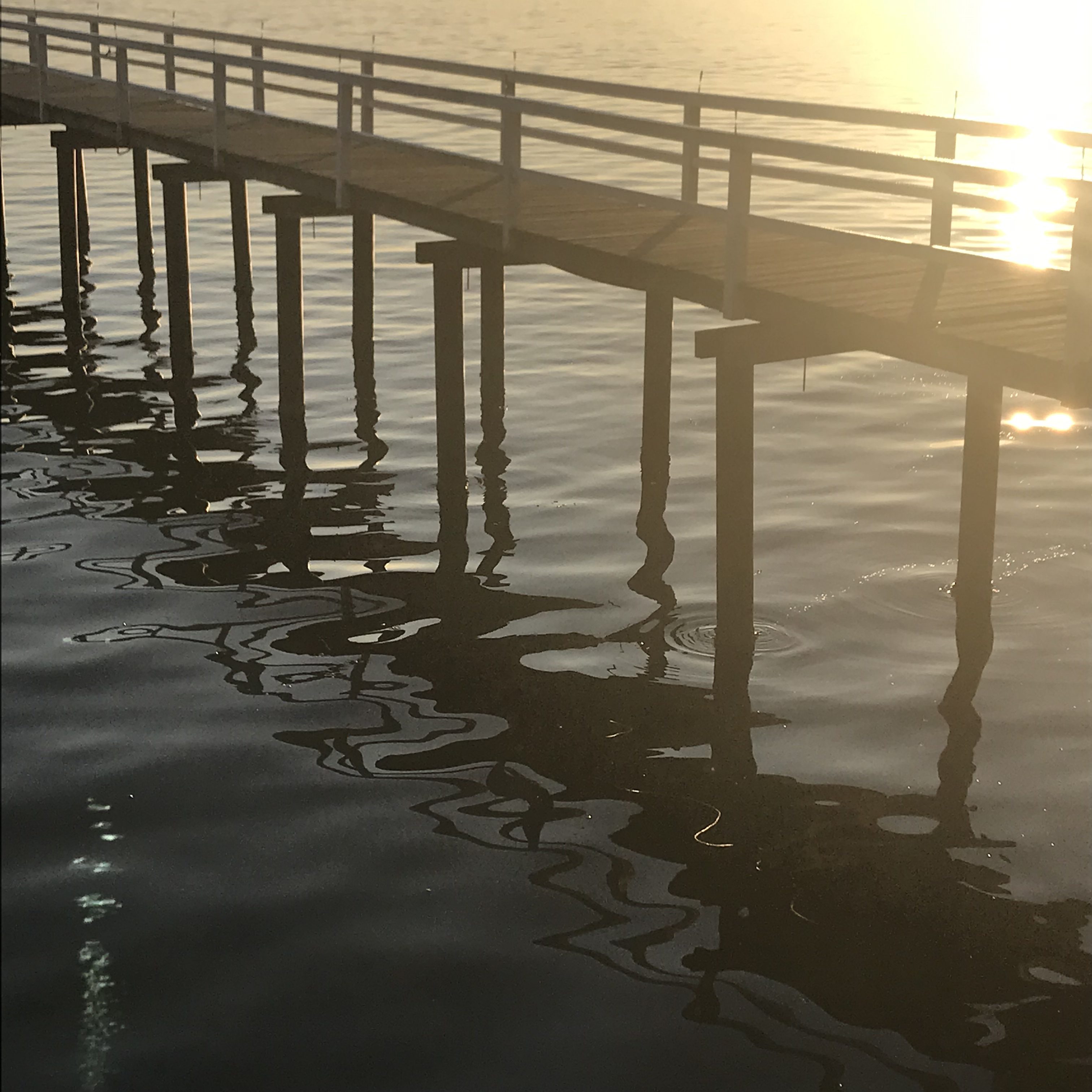
And just because staring at the reflections made me feel a little dizzy, here is something to give your eyes a little rest: The view towards the Baltic Sea out of Kiel fjord.
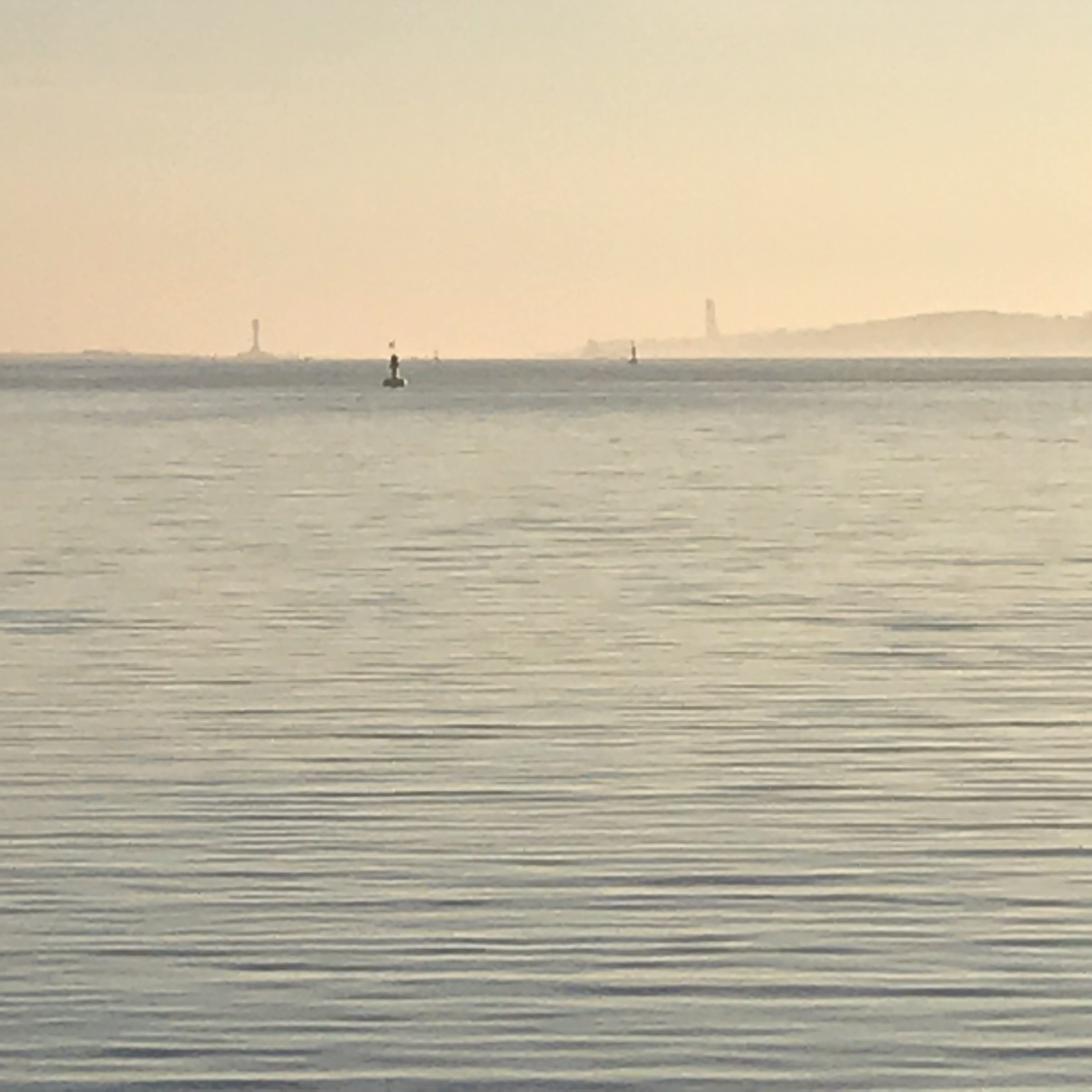
Hope you are all having a nice day full of #wavewatching! :-)
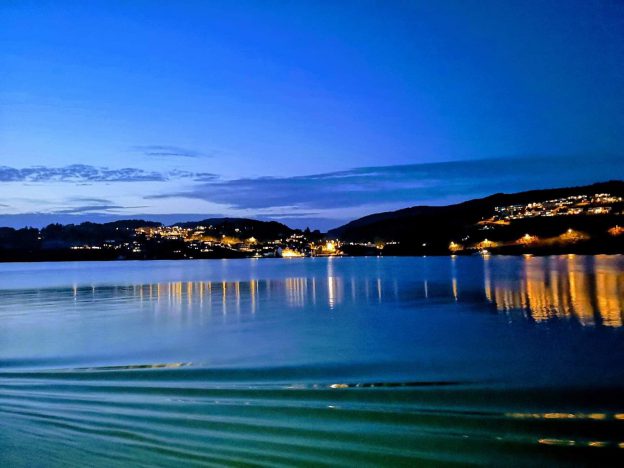
After doing a #friendlywaves post from a Norwegian fjord yesterday, let’s do another one from somewhere south of Bergen, by my friend Arnt. Very different mood today!
What I find super fascinating about the picture below is how clearly you see the ship’s feathery wake in the reflection of the street lamps on the bridge, as the ship is moving towards the left and you are looking out over it’s starboard side, more or less perpendicular to its direction of travel.
Towards the left of the picture, the street lamps reflect as straight lines towards you, as you would expect if the sea was calm and the surface more or less flat. (Why as a line rather than a single point source? Because, of course, the water isn’t completely calm, so in each wave there is an area that is positioned exactly such that the angle of the incoming light and the angle of the reflected, outgoing light (which have to always be the same) reflect the light from the lamp directly into the camera. As there are many waves that somewhere match that condition, we see light reflected in many spots even from a single lamp)
Towards the right, though, these lines of light get more and more deformed, bot as the lights get closer to us (so we notice the deformations more easily) and as there are waves caused by the ship.
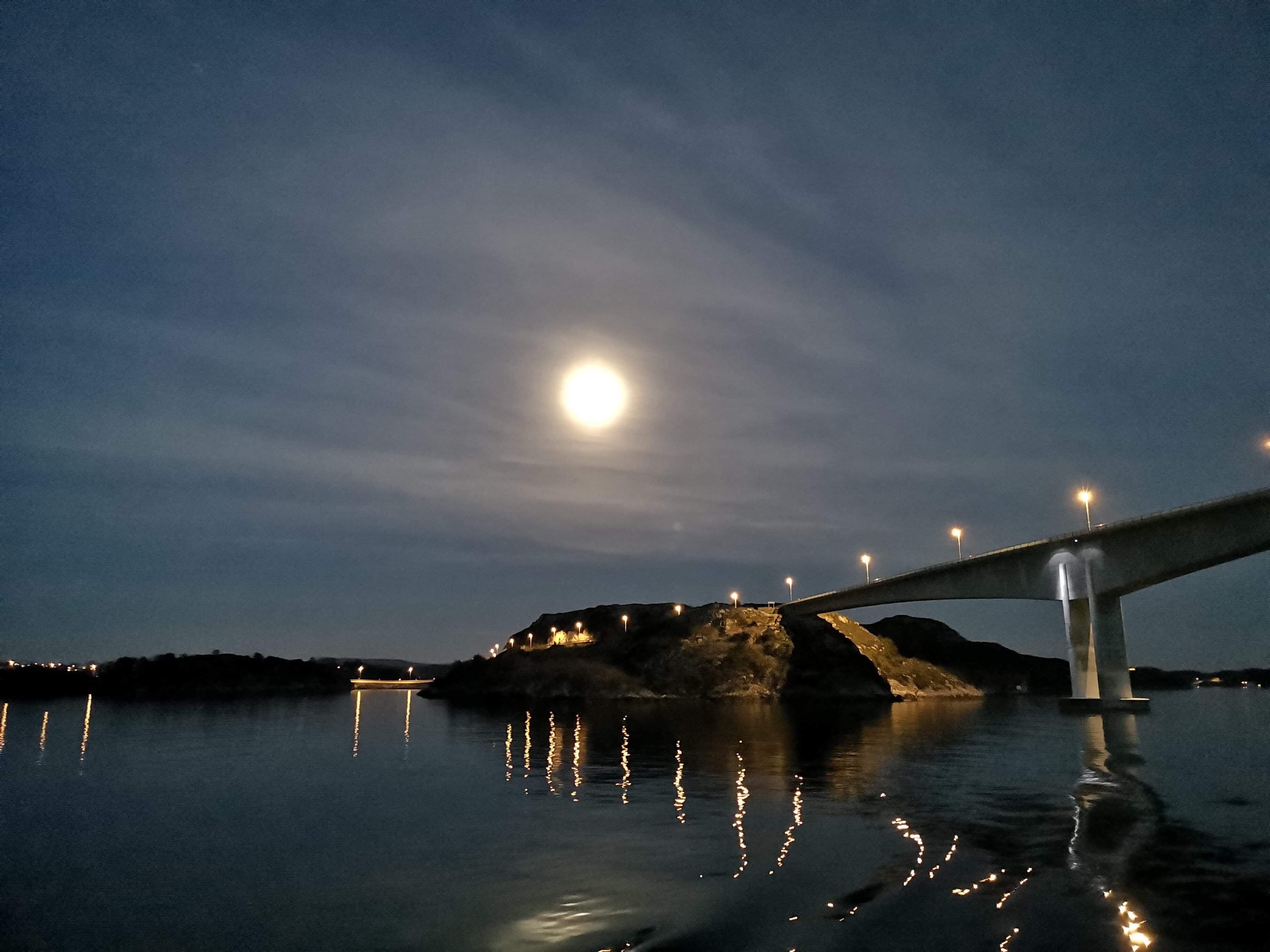
Picture by Arnt Petter Både, used with permission
And isn’t it fascinating how the moon reflects as more of a smudge than a line? I think that is because its light is hitting the water at a steeper angle, so there would need to be much steeper waves further away if they were to reflect the light towards us.
Anyway, below there is another picture from the next night, I think. Here you very clearly see the ship’s feathery wake again, and here you can see how the slope of the waves is important for what gets reflected towards us and what doesn’t: Only where we have steep slopes (i.e. only at the wake) can we see reflections f the light from the land in the lower third of the picture. There is an area where the angles clearly don’t work between that and the clear reflections further towards the shore. Oh, and do you see the different surface roughnesses that make reflections seem clearer and less clear depending on whether the surface is flatter or rougher due to a local breeze?
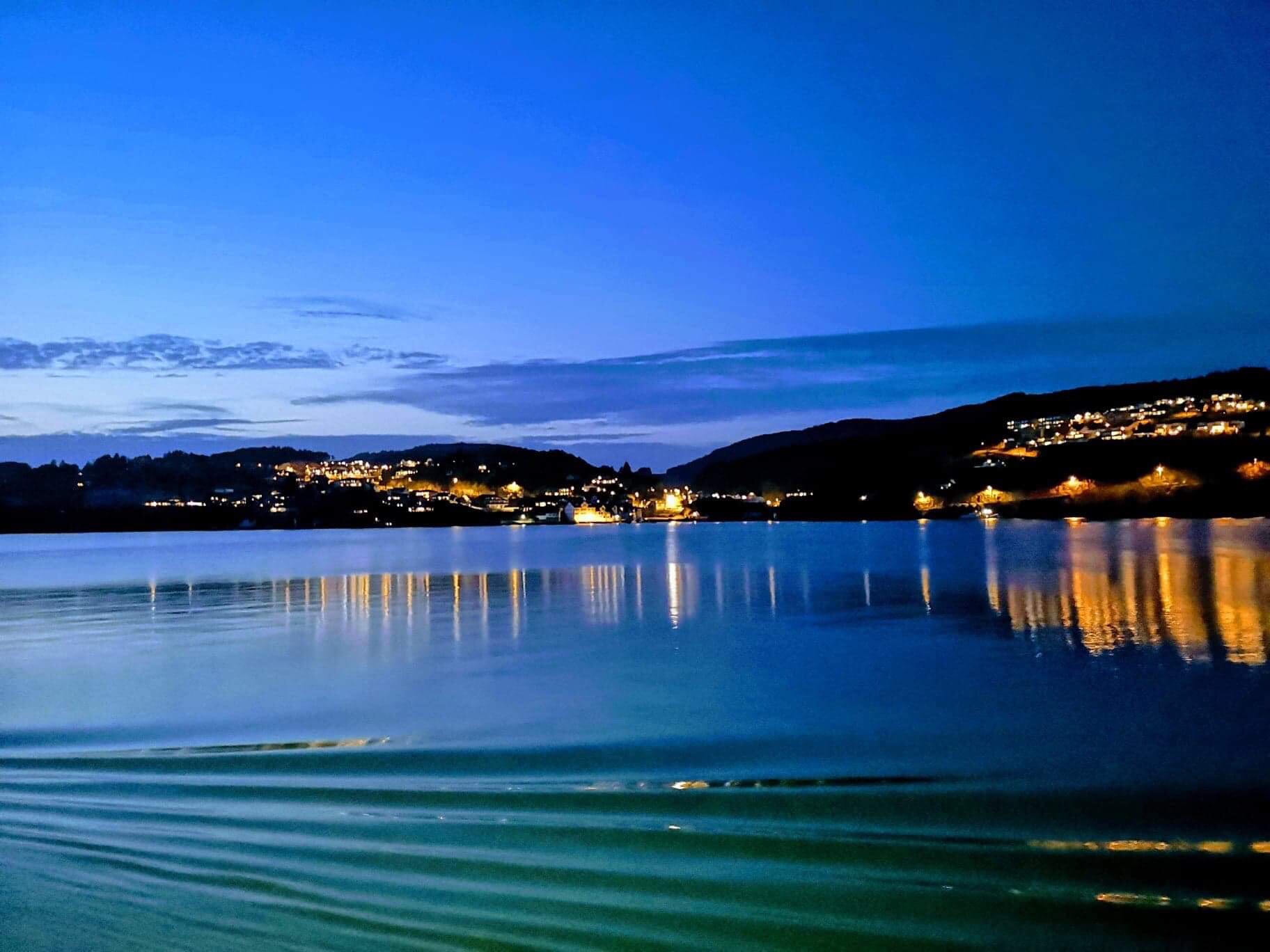
Picture by Arnt Petter Både, used with permission
This is fun! Does anyone else have #friendlywaves for me? :-)
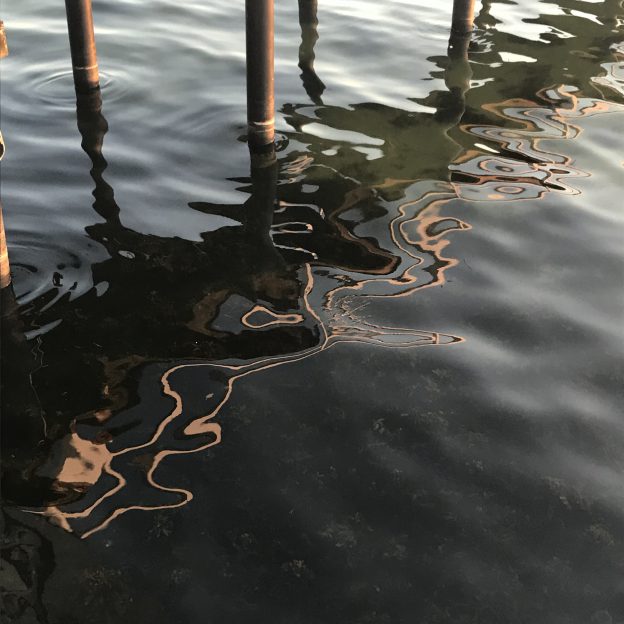
Occasionally working from home is awesome for many reasons, but mainly because I can use the time usually spent on commuting on … wait for it … wave watching. With my cup of coffee so I can warm up my fingers in between taking tons of pictures.
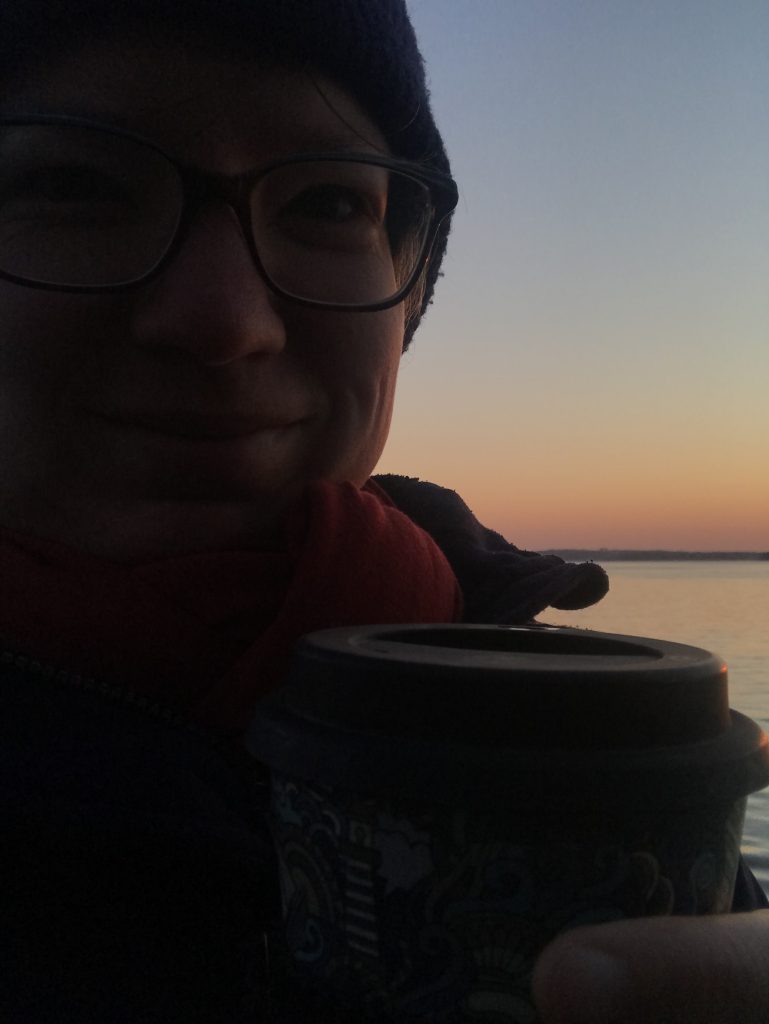
But I just love it. See below how the seagull is making waves where it is swimming, but is surrounded by a much larger circle, too, that it started when it landed on the water?
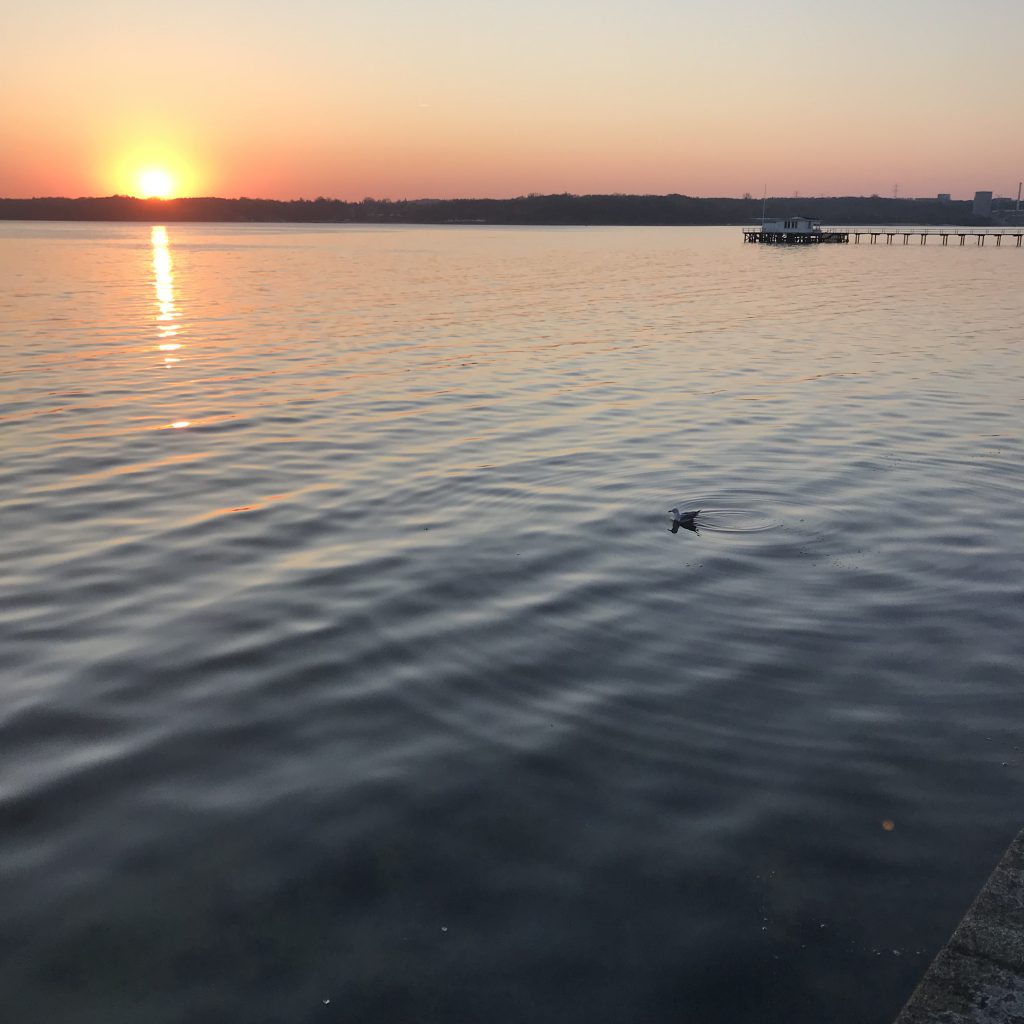
And especially gorgeous in the morning light: The reflections of sunlit structures on the water. The pier you see above gets distorted into something like this:
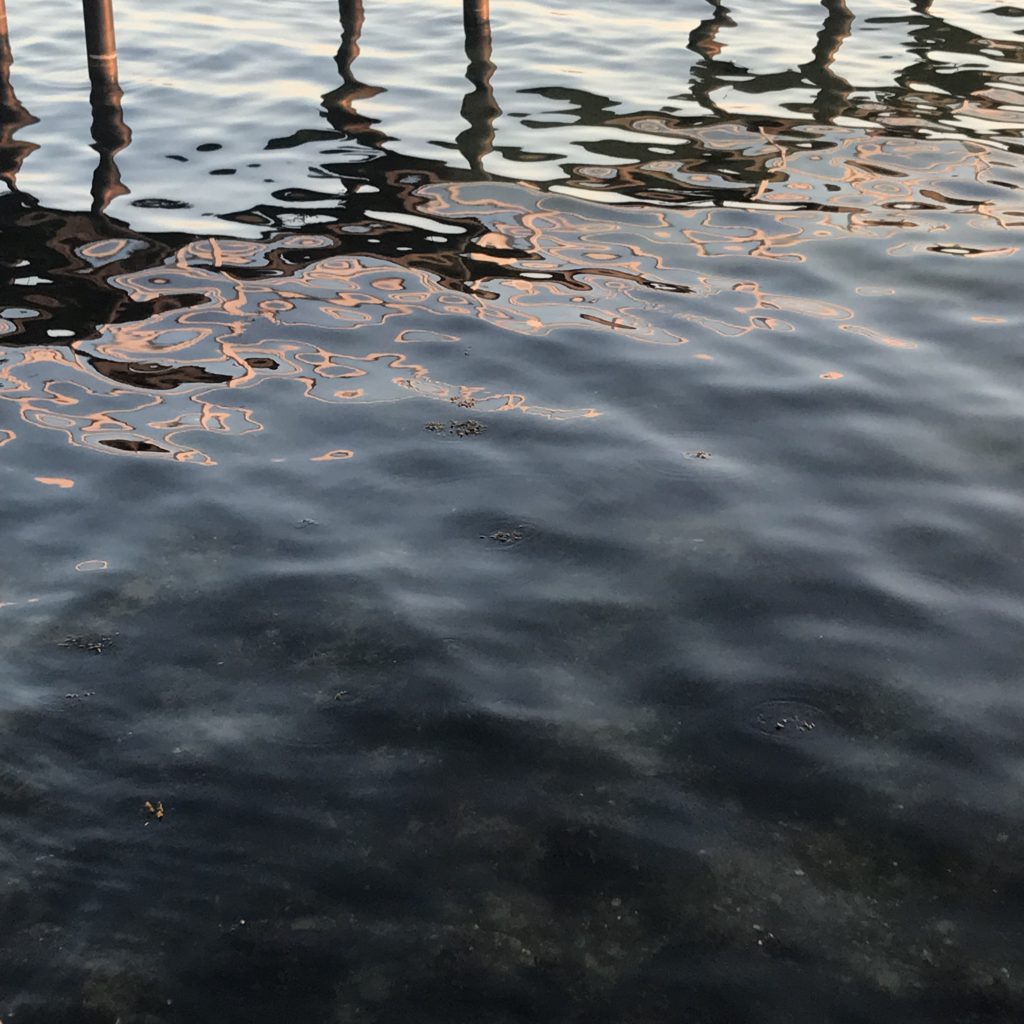
And if you look closely, you see the ring waves radiating from where the pylons disturb the water surface as waves go by.
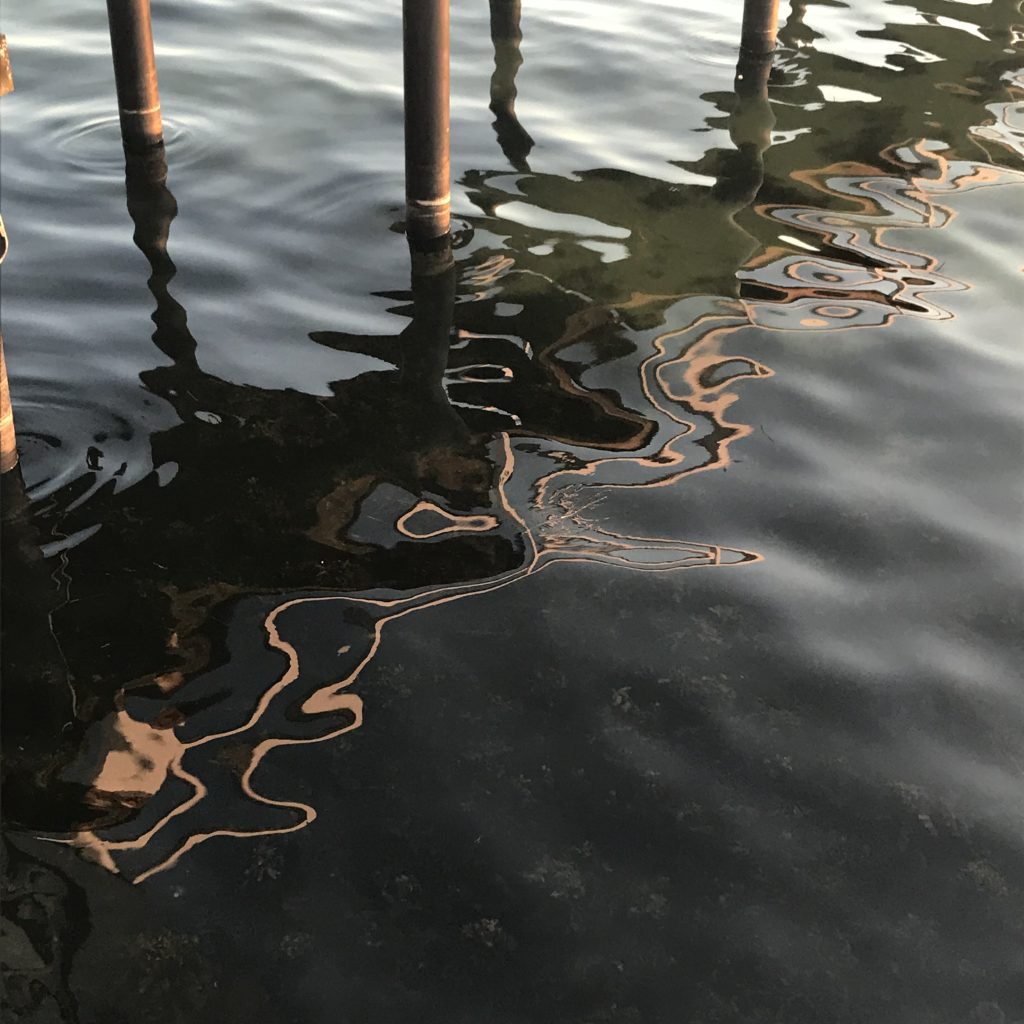
I absolutely love to watch how the much longer waves can cause these ring waves with such a short wave length, and how they are deformed again by the waves that caused them. I can look at this for a long time without getting bored, it is so calming to me! Especially in the early morning light.
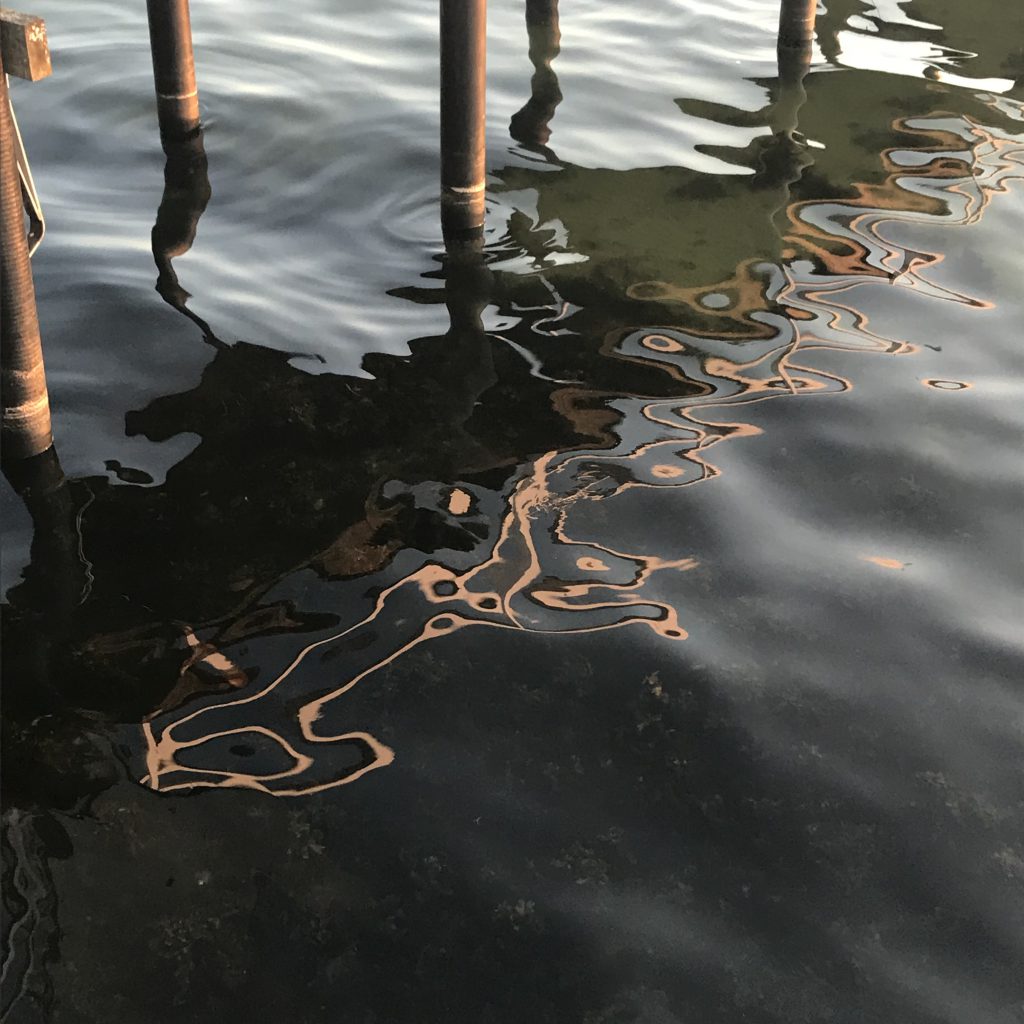 But anyway, time to start working. Have a great day everybody!
But anyway, time to start working. Have a great day everybody!
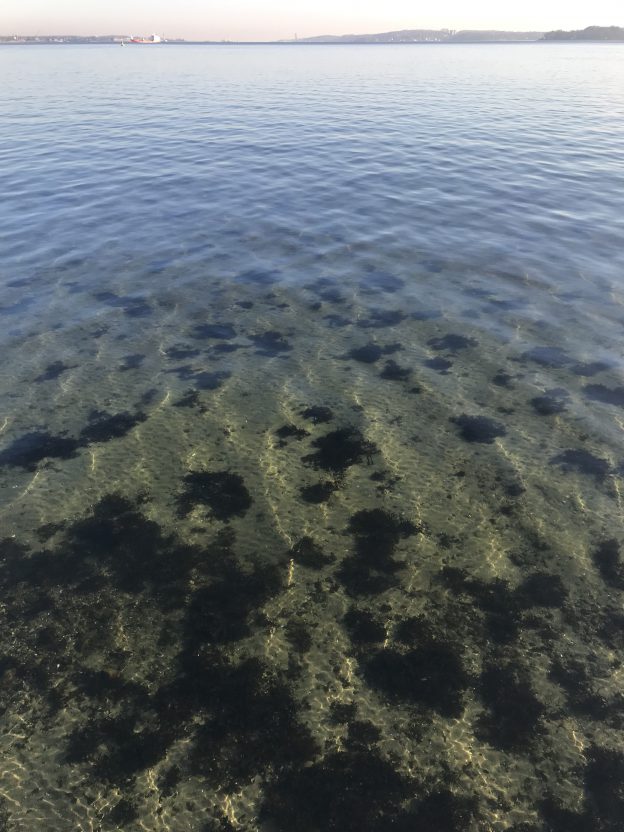
What is it that we actually look at when we go wave watching? Water is pretty much clear (or at least it is in the spots where I like to go wave watching), so how come we are able to see waves?
What we are looking at are not actually the waves themselves, but at how surfaces oriented in different directions reflect light from different directions towards us, and usually the light isn’t uniformly distributed, so we see lighter and darker areas on the waves that are associated with certain orientations of the surface, i.e. the slopes going up and down to and from the crests.
But this only happens if we look at water at a small angle — then the water surface acts to reflect most of the light from above. However if we look at water at a steep angle, we are actually able to look inside. See this in the picture above? This is due to a phenomenon called total internal reflection.
Now that light easily gets in and out of the water, the water surface does something weird: It acts as a lens and focusses light on the sea floor so we see bright areas and not so bright areas. And looking at how the brightness is distributed on the sea floor, we can figure out what the waves must be to have focussed the light in exactly that way, even though we can’t see the water surface.
Let’s start with an easy example. Below, you see the half circles of concentric waves radiating away from some obstacle at the bottom of the sea wall. The further away from the center you look, the more other waves you notice as the concentric circles become more and more difficult to see.
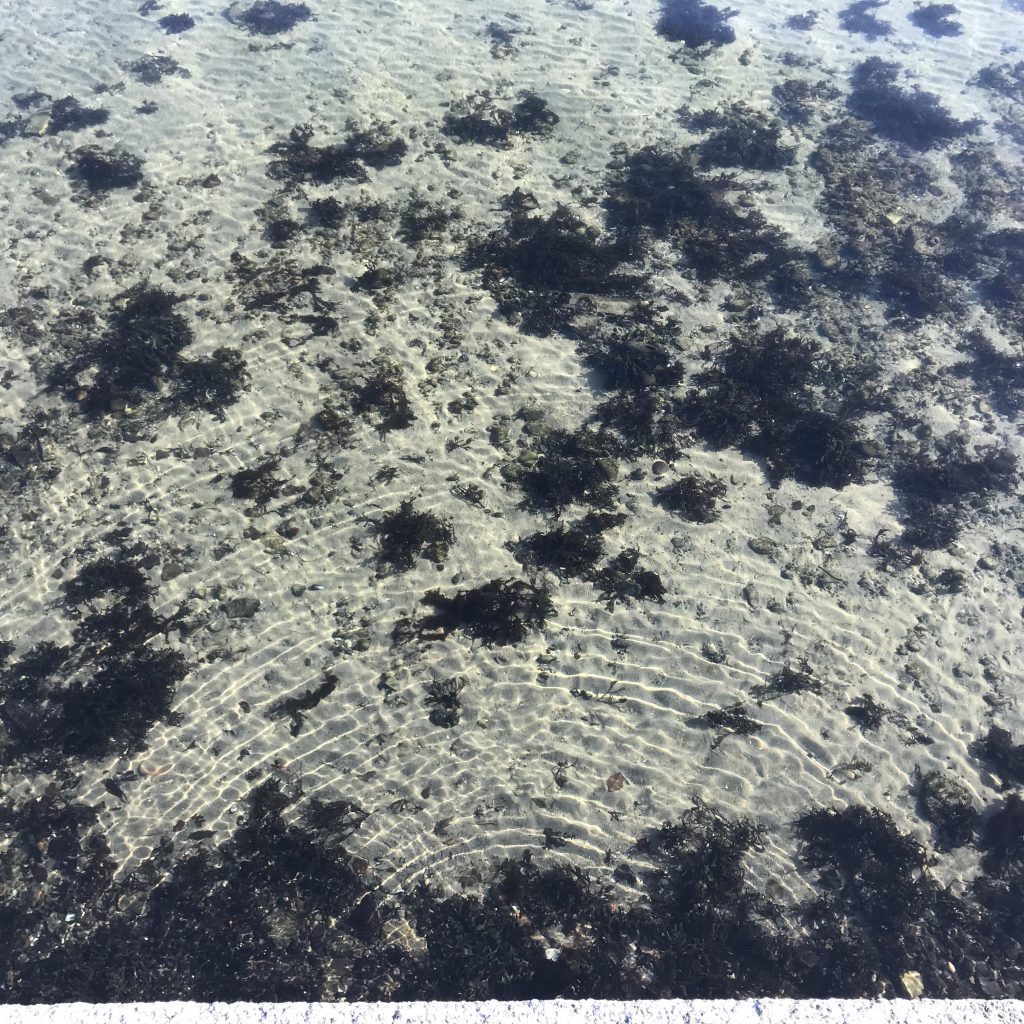
Moving on to a slightly more difficult case below.
You see the waves radiating away from the seagulls. Behind them, at a shallow angle, you mainly see the ambient light of the sky reflected on the waters surface to let you see the waves. Towards us, though, at a steeper angle, it gets more and more difficult to see the water surface and the waves, but we start seeing the light focussed on the sea floor, mirroring the circles of the waves above.
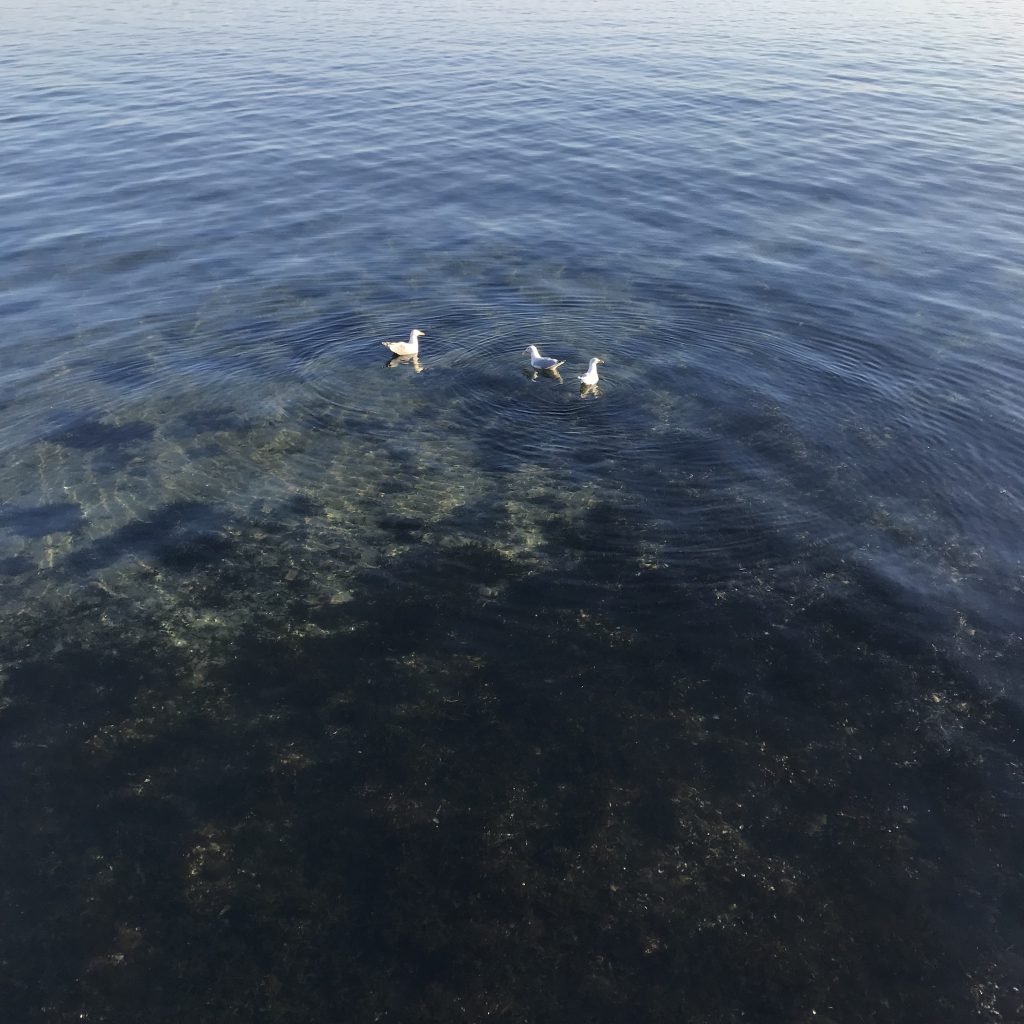
Here is another example of waves , except this time we see because of reflection of light on the surface further out, vs focussing of light on the sea floor closer to us, except that this time we are not looking at the same waves any more. The waves further out are wind waves and waves the birds made, the waves further in are similar to the ones in the second picture — created by an obstacle at the base of the sea wall.
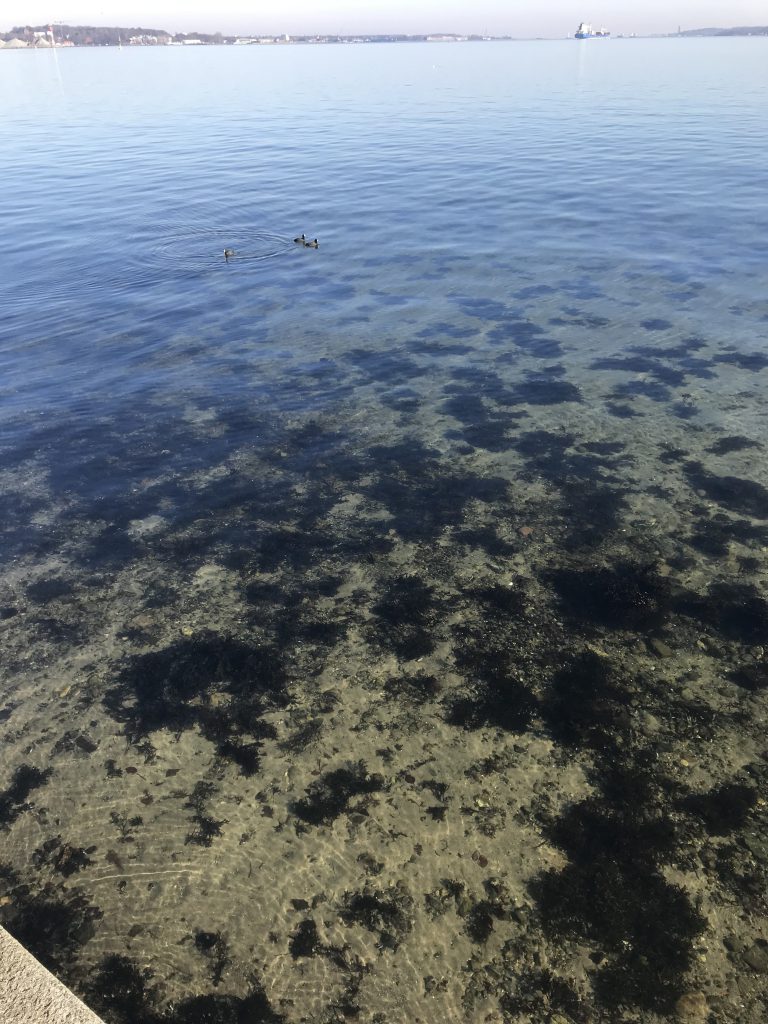
But then sometimes it gets really difficult to reconcile the waves we see through these two different phenomena. Below, the wave field we see by looking at the light reflected at the surface seems to be dominated by wave crests coming towards us, with the crests being more or less parallel to the sea wall at the bottom of the picture. There is some small stuff going on on top of that, but it doesn’t seem very important.
But now looking at the pattern of light on the sea floor, we pick out something very different: The dominant wave crests are now perpendicular to the sea wall when you look at the middle of the picture below (towards the bottom we see those half circles again that we saw above, too)! Where do those wave crests come from that are perpendicular to the sea wall?
There are actually two things I can think of.
First: they are actually an important part of the wave field, we just don’t pick them up very well because — in contrast to the waves coming towards us with the side going up towards the crest reflecting the dark land behind us and the side going down towards the trough reflecting the bright sky — waves going perpendicularly to that field would mainly reflect the sky, so it would be hard to make out their crests and troughs since they appear to be the same color.
Second: I’m not actually sure this makes sense any more. I was going to say that the surface shape of wave crests moving away from the sun might be more suited to focus light than wave crests moving in a perpendicular direction. But looking at all the examples of circular waves that I posted above and that show up as circles, not just in areas where the wave crest was in specific directions, this probably doesn’t make sense. If anyone is reading this, what do you think??
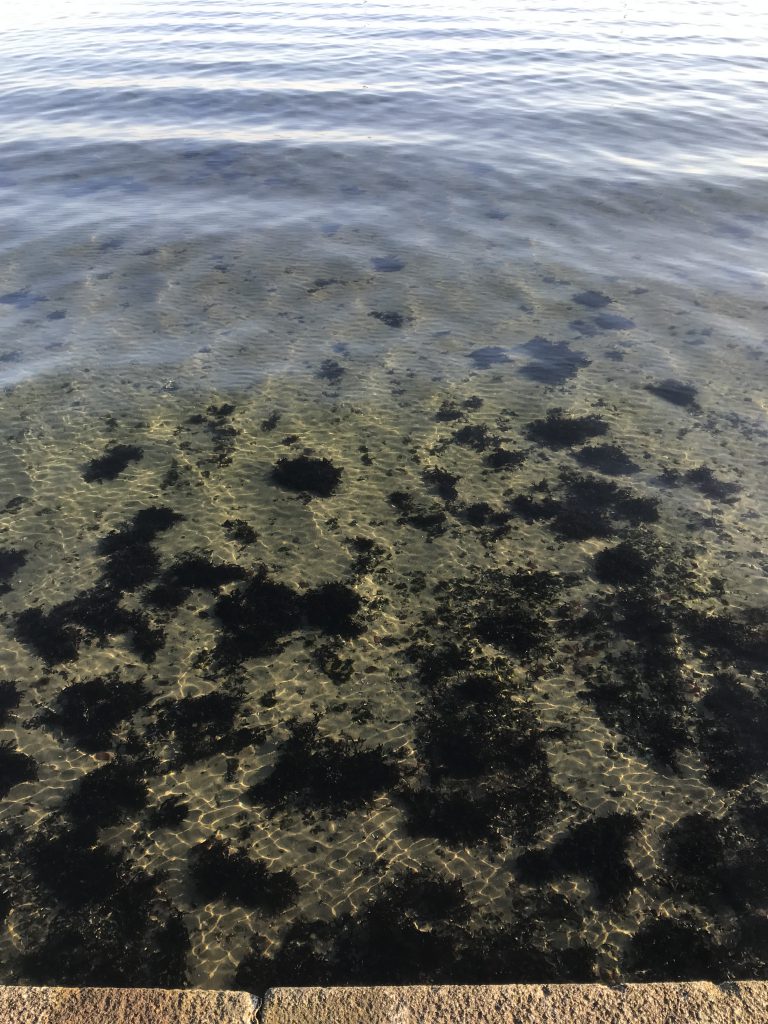
Below is another example: Here we see a crisscross of waves, a checkerboard pattern of an incoming wave field and its reflection — as long as we look far out onto Kiel fjord. If we look into the water at a steep angle, we see again wave crests that don’t seem to match what we saw on the surface! (btw, don’t let yourself be distracted by the ripples in the sand that might look like they are also caused by light being focussed by the water surface. They are just ripples in the sand…)
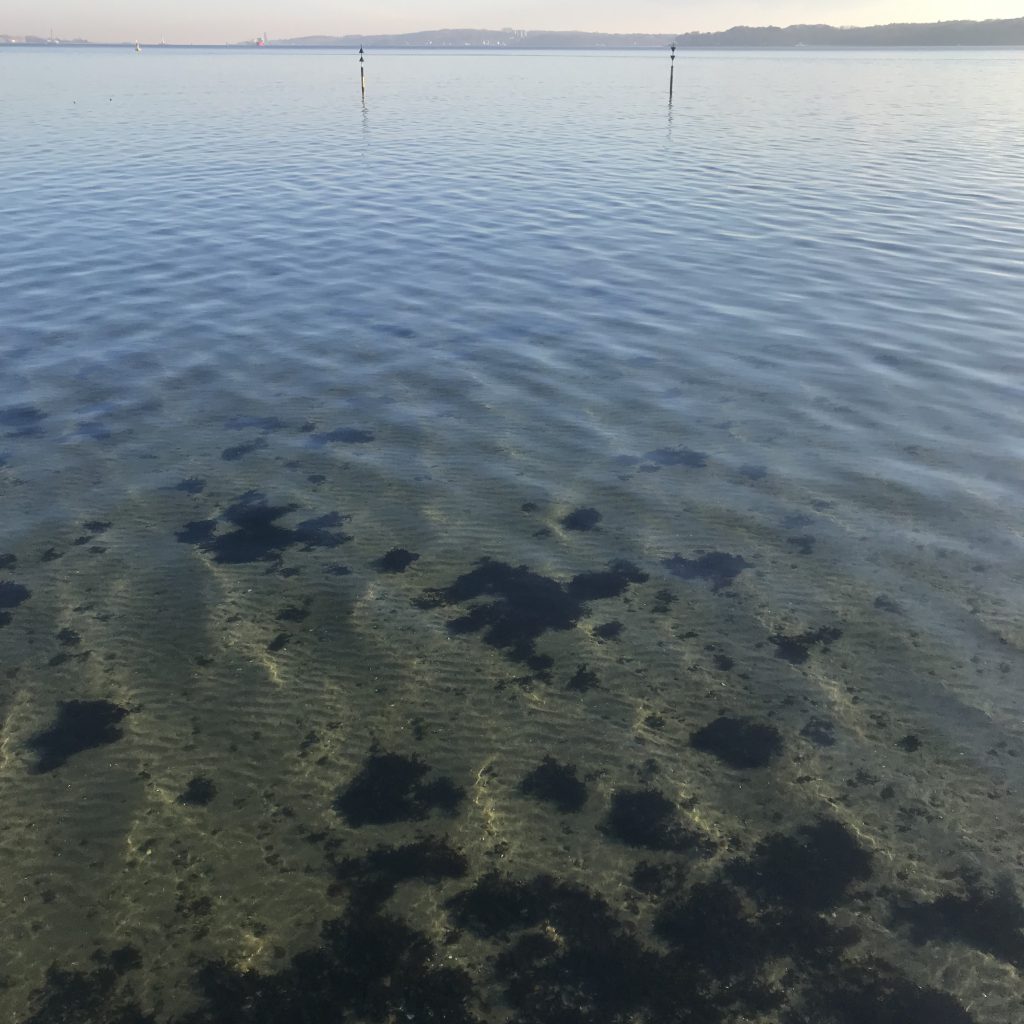
Clearly I need to think about this some more to figure out what’s going on here. I’m grateful for any input anyone might have!